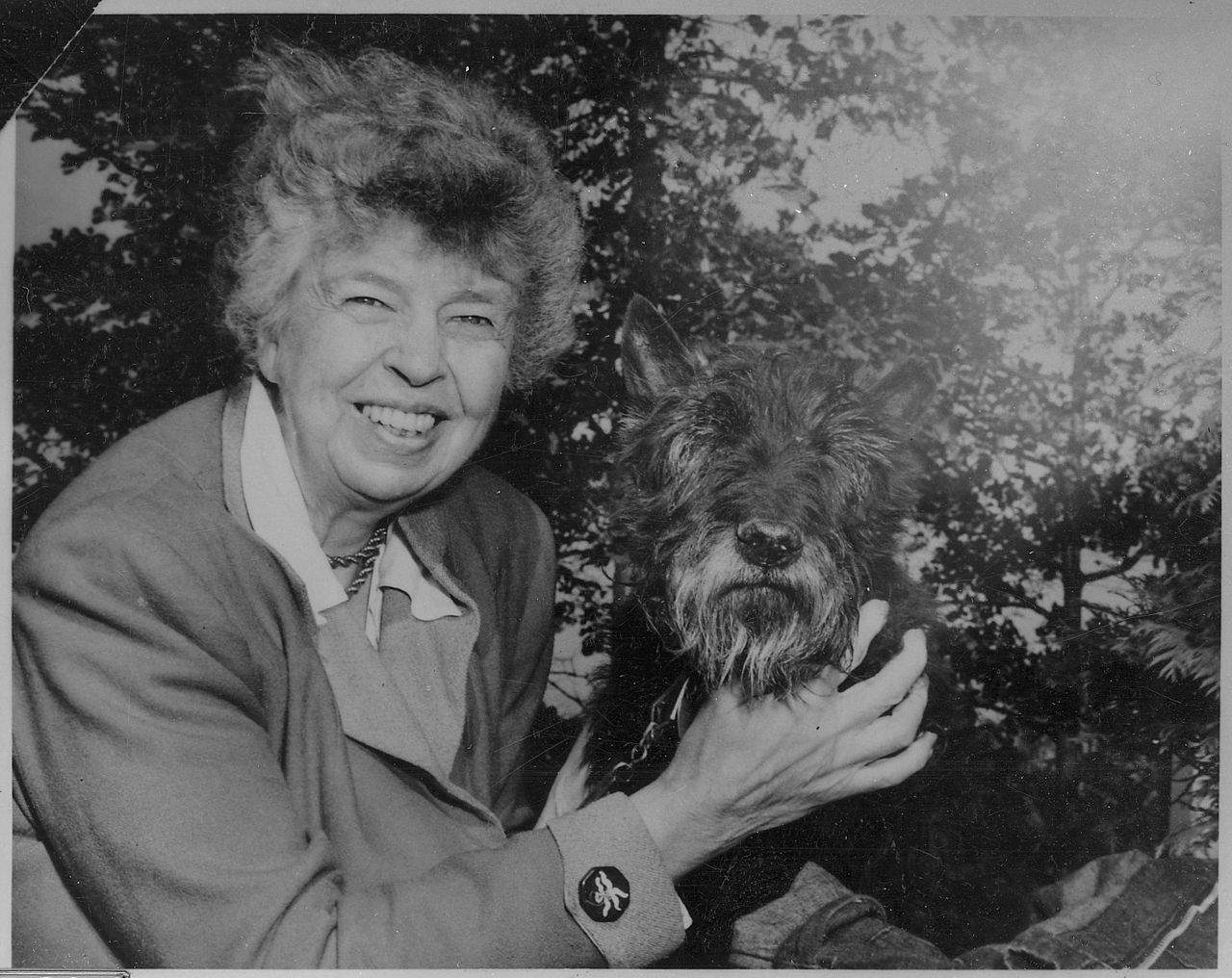There is no official definition of “first lady” in the United States, and no one has ever cataloged the duties that person is expected to fulfill. The term usually applies to the wife of a sitting president (when a woman is finally elected to the office, her spouse will presumably be “first gentleman”) – though there have been numerous examples throughout our history of non-spouses assuming the title, at least informally.
Thomas Jefferson’s wife, Martha, for instance, died years before he became president, so their daughter Martha Jefferson Randolph became his de facto first lady. Harriet Lane, niece of James Buchanan – who was a bachelor, and possibly gay – occupied the position for him. Benjamin Harrison’s wife, Caroline, died a few months before he left office and their daughter, Mary Harrison McKee, filled in for her for the duration of his term.
Throughout our history, there have been reluctant, reclusive first ladies – some sidelined by illness, physical or mental – and also first ladies who took to the role enthusiastically and with a sense of style. Planning dinners and other events and acting as the executive mansion’s official host have been default occupations for most first ladies, and many of them have overseen renovations of their temporary home. Many have also, especially in more recent times, used the prestige and visibility of their position to support worthy causes, ranging from women’s rights to beautification of our highways to AIDS awareness. Some have pointedly involved themselves in political matters, while others have avoided such entanglements altogether.
For various reasons, some first ladies – just like some presidents – have been considerably more popular than others. To determine those whose reputations are the best (and worst), 24/7 Tempo reviewed the 2020 Siena College Expert Survey of American First Ladies, released by the Siena College Research Institute out of Loudonville, New York.
The survey has been conducted six times since 1982. The 2020 edition, conducted via online interviews from Feb. 12 to June 23, 2019, asked some 209 historians, political scientists, and other scholars to rank 40 first ladies on a scale of one to five (five being outstanding, one being poor) in 10 categories: background, value to country, stewardship of the White House, courage, accomplishments, integrity, leadership, being her own woman, public image, and value to the president. Results were then converted into a mean score for each woman, and the first ladies were ranked on that basis.
As in the previous five surveys, Eleanor Roosevelt held the top spot, with Abigail Adams (wife of our second president, John Adams, and mother of our sixth chief executive, John Quincy Adams) coming in second for the fourth consecutive time. Michelle Obama moved into the No. 3 spot, edging out Jacqueline Kennedy at No. 4. The lowest mean score went to Melania Trump, though as SCRI director Don Levy has pointed out, “We’re going to have to wait on history’s evaluation but for now it looks like…historians may have assessed Melania Trump’s contribution in part based on their view of her husband.”
Note that first ladies are referred to by their first names in the summaries below to avoid confusion with their husbands. (Can you solve these real “Jeopardy!” questions about U.S. presidents?)
Here is a list of America’s most popular first ladies:
40. Melania Trump

- Tenure as first lady: Jan. 20, 2017 – Jan. 20, 2021
- Mean score: 46.3
A one-time model, born in Slovenia, Melania, Donald Trump’s third wife, was known as a fashionable dresser while in the White House. Her primary initiative during her tenure as first lady was a campaign called Be Best, aimed at counteracting cyberbullying and discouraging drug use by the young. According to the Siena College survey, she ranks lowest in almost every metric considered, including public image, and is the only first lady with an integrity score below 50 (47.05).
39. Jane Pierce
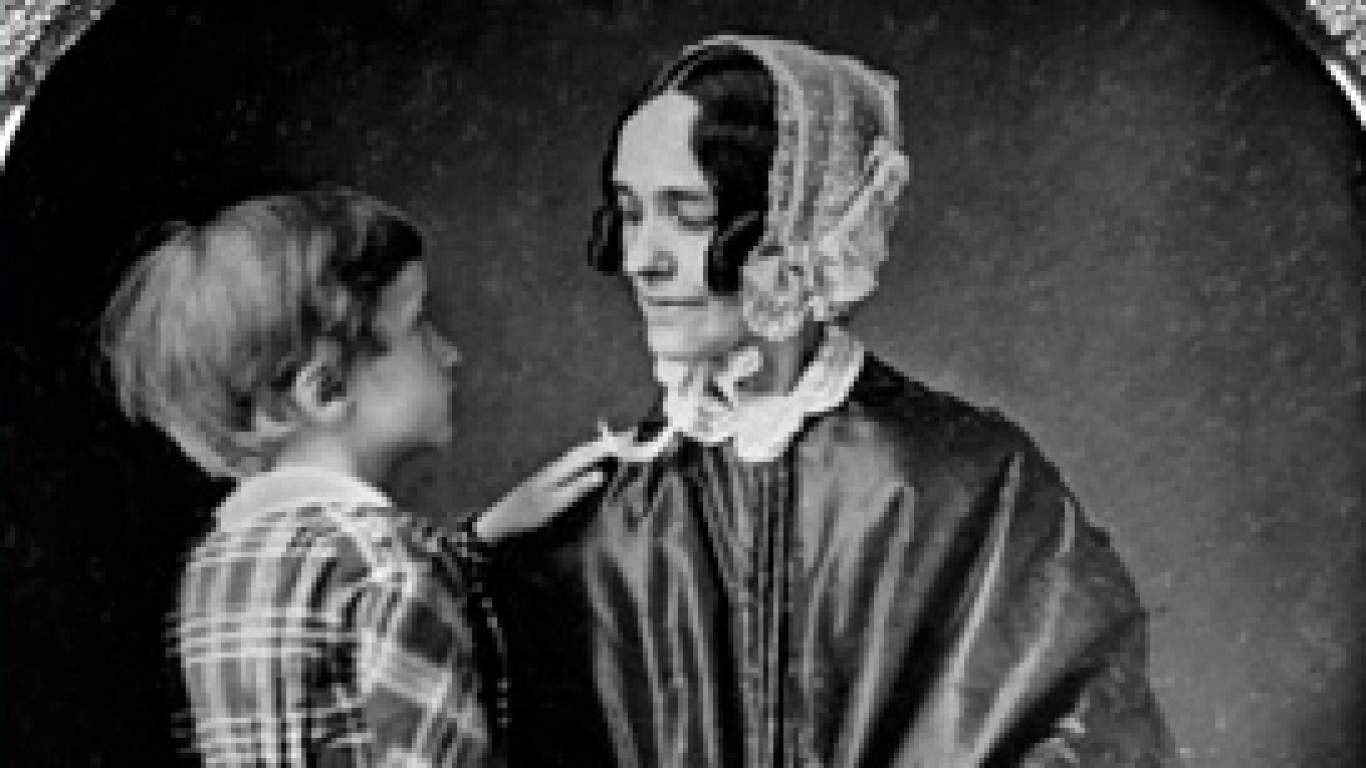
- Tenure as first lady: March 4, 1853 – March 4, 1857
- Mean score: 57.05
The deeply religious wife of Franklin Pierce, Jane is said to have prayed that her husband – who had lied to her about his presidential ambitions before winning the Democratic nomination – would lose the election. One of the Pierces’ sons, Benjamin, was killed in a train accident before his father could take office. She believed that the tragedy would not have occurred had her husband not been elected, and spent much of her time as first lady in mourning or withdrawn from public life.
38. Margaret Taylor

- Tenure as first lady: March 4, 1849 – July 9, 1850
- Mean score: 58.19
Margaret was another first lady who was unhappy with her husband’s election to the presidency, and another who spent her brief tenure as first lady – Zachary Taylor died after 16 months in office, of a disease whose exact nature remains unknown – in seclusion in the White House, deputizing her daughter Mary Elizabeth Bliss as her surrogate.
37. Letitia Tyler
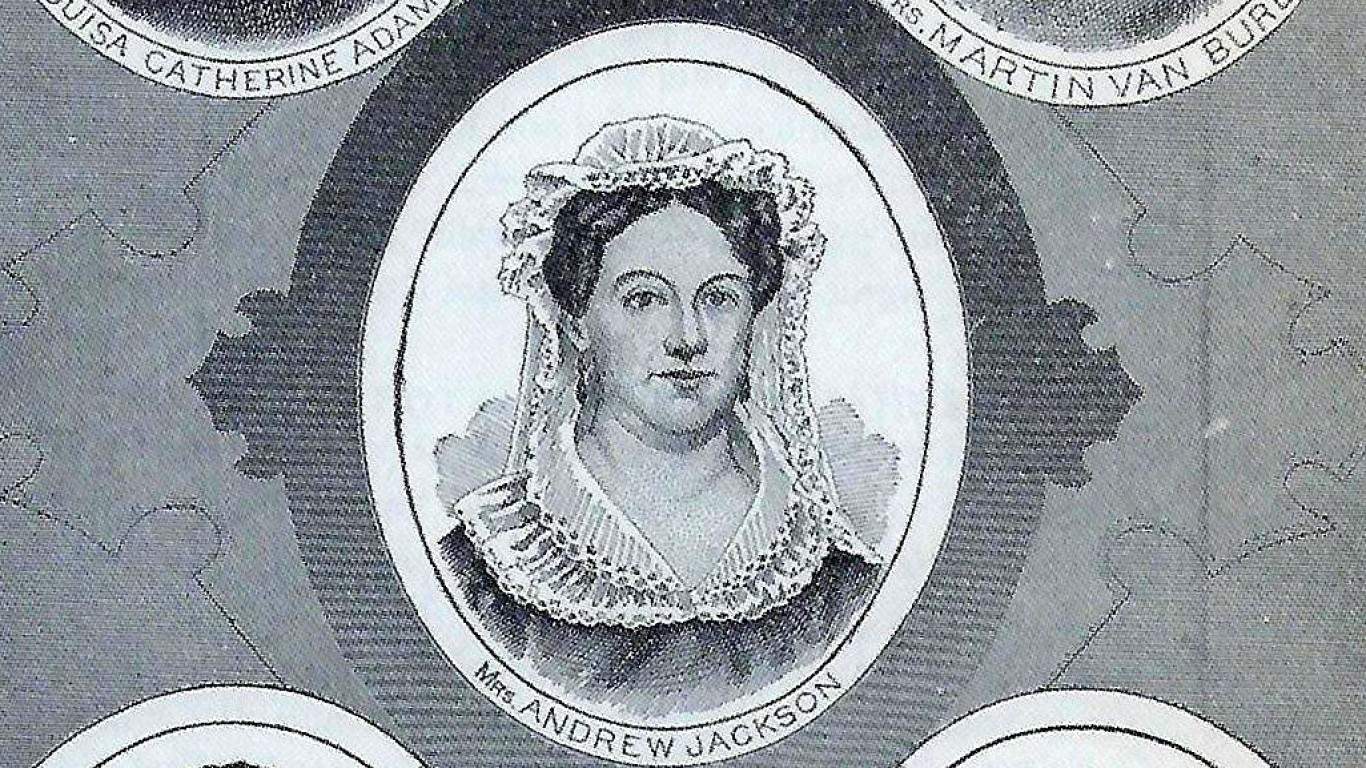
- Tenure as first lady: April 4, 1841 – Sept. 10, 1842
- Mean score: 58.26
Two years before her husband, John Tyler, became president upon the sudden death of William Henry Harrison, Letitia had a stroke, permanently affecting her mobility. While her illness prevented her from fulfilling the usual functions – which she delegated to her daughter Letitia and daughter-in-law Priscilla – she was said to have been a valuable advisor to her husband, remaining current on the political issues of the day. She died following a second stroke in 1842, marking the first time a first lady had died while her husband was in office.
36. Eliza Johnson
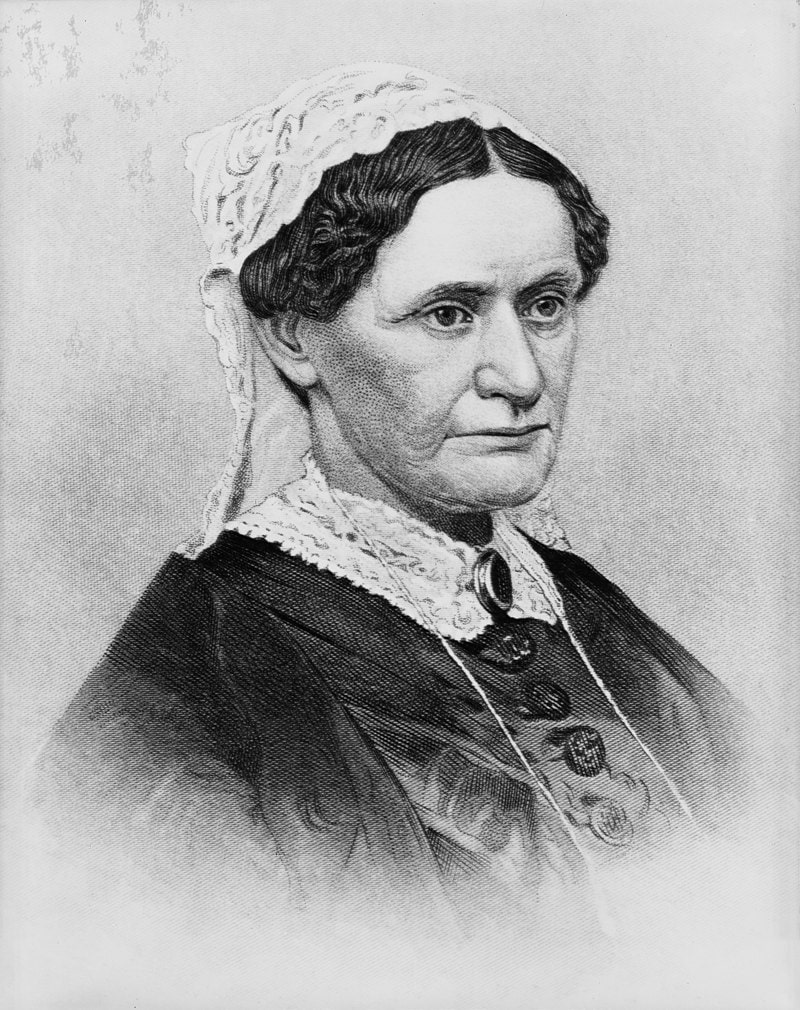
- Tenure as first lady: April 15, 1865 – March 4, 1869
- Mean score: 58.62
Similarly to Letitia Tyler, Andrew Johnson’s wife, Eliza, was already incapacitated when her husband assumed the presidency – in her case from the effects of a tuberculosis infection. Like Letitia Tyler, too, she gave her husband advice and reportedly helped write his speeches, while remaining mostly uninvolved in the first lady’s usual ceremonial duties.
35. Florence Harding
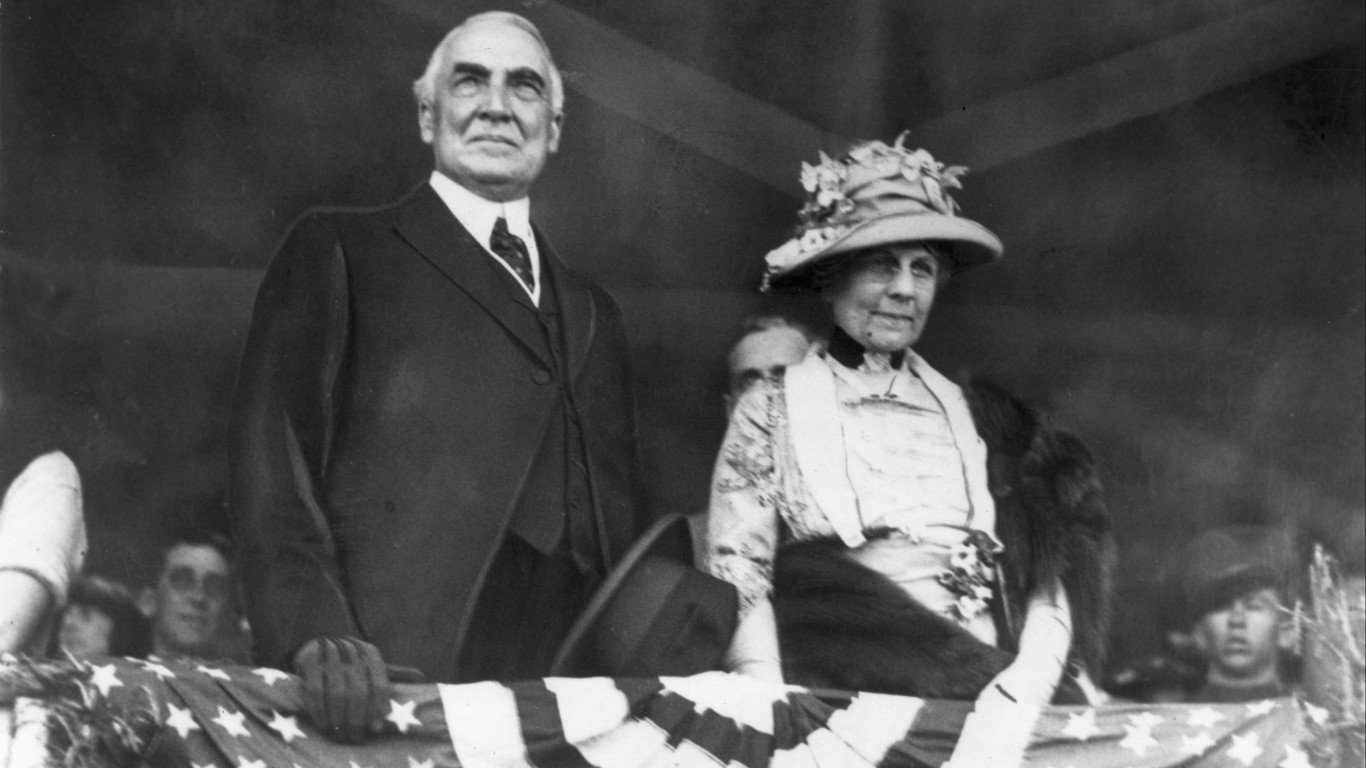
- Tenure as first lady: March 4, 1921 – Aug. 2, 1923
- Mean score: 58.96
By the time her husband, Warren Harding, became president, Florence had weathered several bouts of serious kidney disease, her husband’s affair with a good friend of hers, the death of her son, and an understandable period of depression. She proved to be a dynamic first lady nonetheless, influencing the president’s choice of cabinet members and giving elaborate dinners and immense parties, to which both political and non-political celebrities were invited. Pro-Prohibition and anti-smoking, she was also the first woman in her position to appear on film (in newsreels).
34. Ida McKinley

- Tenure as first lady: March 4, 1897 – Sept. 14, 1901
- Mean score: 59.63
In the 1870s, Ida lost her mother to cancer and both her young daughters (one to cholera, one to heart disease), and herself developed epilepsy and entered into a period of depression. Nonetheless, after her husband, William McKinley, became chief executive, she attended state dinners and traveled with him on his official journeys – though Jennie Hobart, the wife of vice-president Garret Hobart, took on many of her White House duties. Ida’s time as first lady came to an abrupt end when McKinley was assassinated by an anarchist in Buffalo in 1901.
33. Elizabeth Monroe
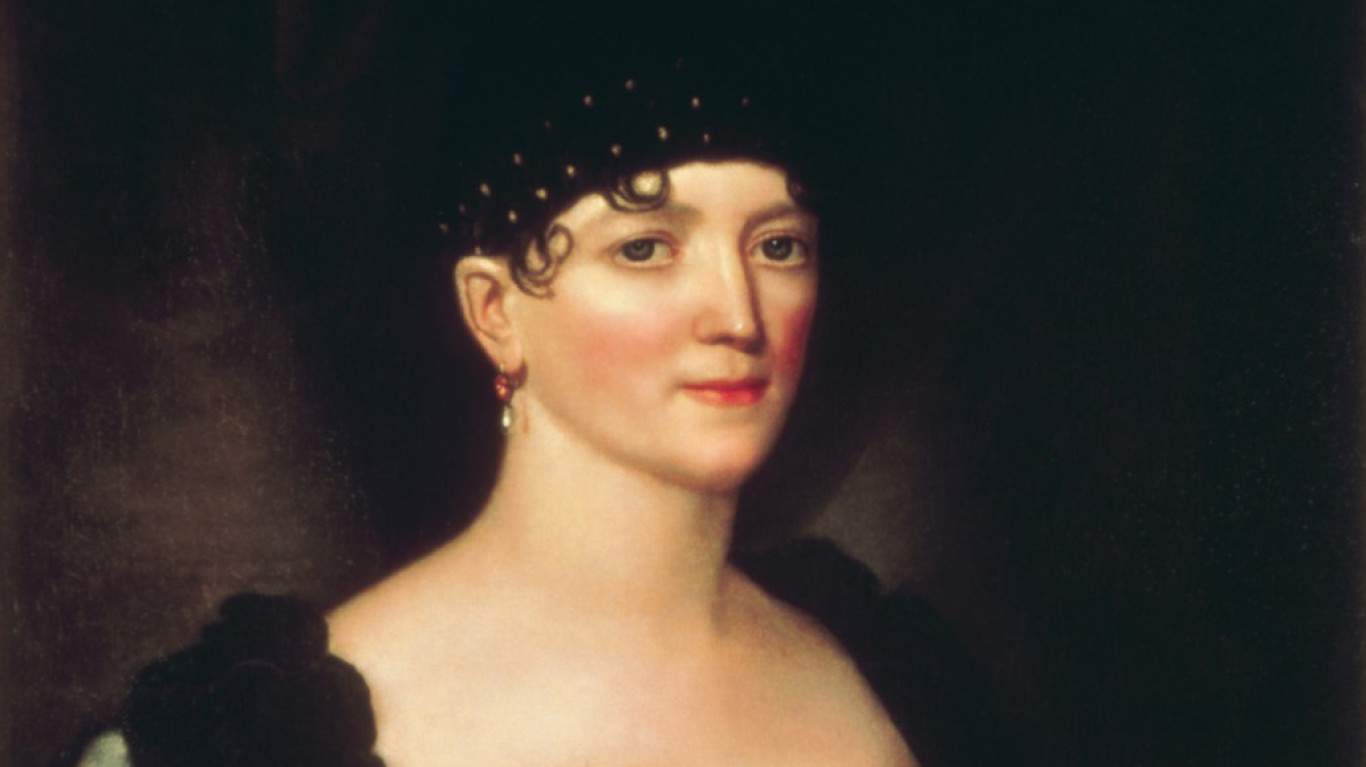
- Tenure as first lady: March 4, 1817 – March 4, 1825
- Mean score: 60.12
James Monroe’s wife, Elizabeth, was generally well-liked, but her participation in her role was limited by recurring illness, possibly epilepsy – and she suffers, probably unfairly, in comparison to her immediate predecessor, Dolley Madison (see below), who was one of the most popular of first ladies.
32. Abigail Fillmore
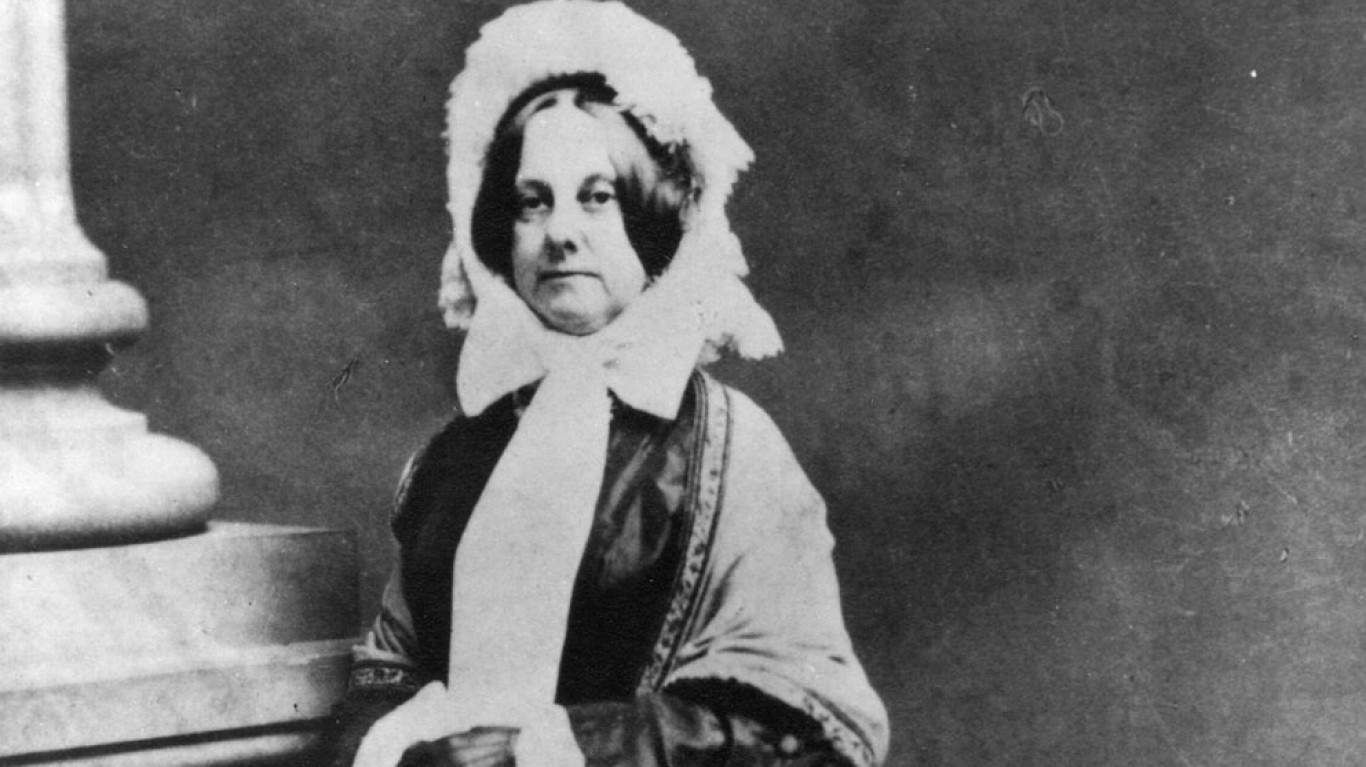
- Tenure as first lady: July 9, 1850 – March 4, 1853
- Mean score: 60.27
After the untimely death of Zachary Taylor, Millard Fillmore took the Oval Office. His wife, Abigail, was known for her love of reading and the arts, and while she was considered a good hostess during her time as first lady, it was said that she didn’t particularly enjoy social events, and often called on her daughter, Mary Abigail, for assistance. She made minimal decorative changes to the White House, but upgraded the kitchen by replacing the fireplace with a wood-burning stove. She was also known to keep up with the goings-on in government and advise her husband on political matters.
31. Julia Tyler

- Tenure as first lady: June 26, 1844 – March 4, 1845
- Mean score: 60.43
John Tyler’s first wife, Letitia (see above), died in 1842, and the Tylers’ daughter, Priscilla, assumed the duties of first lady for two years. Tyler had met Julia Gardiner shortly after his wife’s demise, and in 1844, the two married. She was known for her vigorous support of her husband’s policies and priorities, and supervised an elegant redecoration of the White House. It was also her idea to have “Hail to the Chief” played to herald the arrival of the president at events – a practice that continues to this day.
30. Caroline Harrison
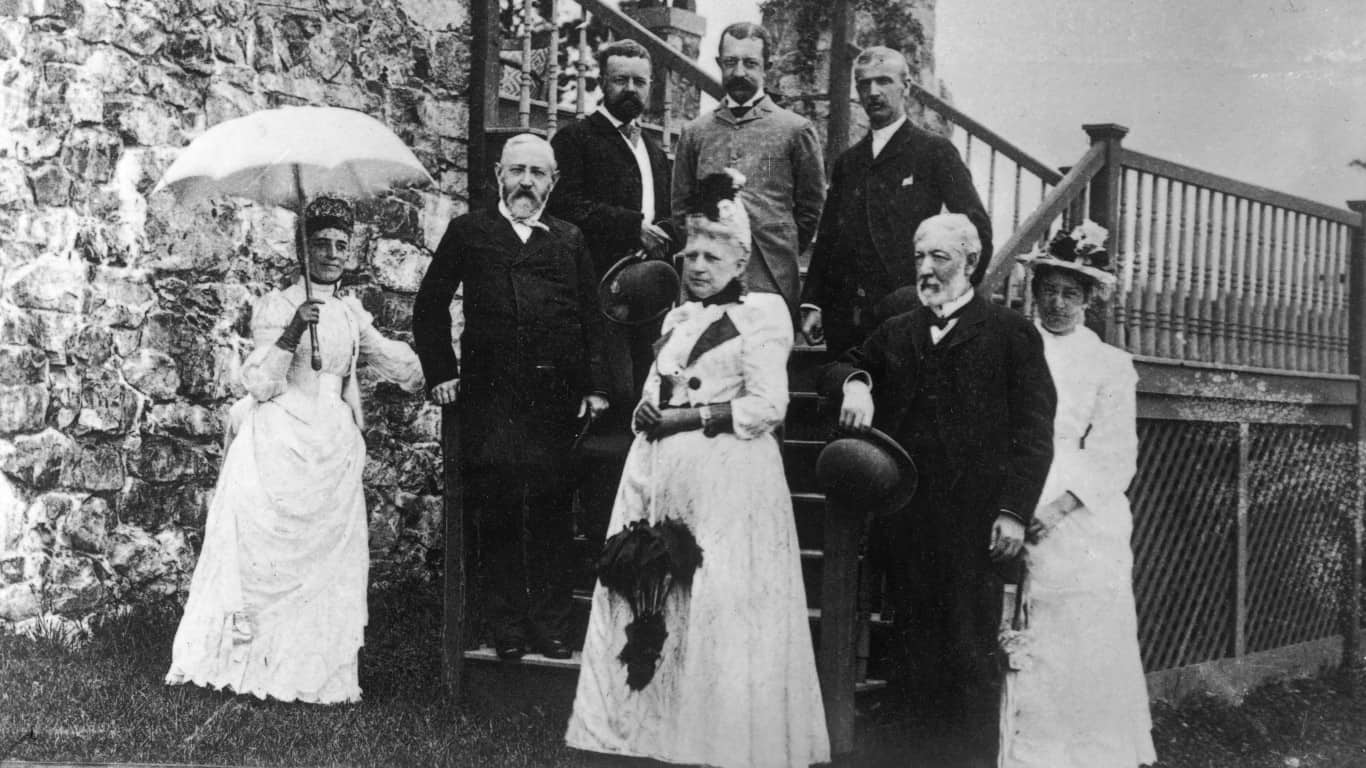
- Tenure as first lady: March 4, 1889 – Oct. 25, 1892
- Mean score: 60.64
Because the large extended Harrison family lived at the White House during Benjamin Harrison’s presidency, Caroline spent much of her time tending to them, not concerning herself much with the public aspects of her role. She was, however, an ardent supporter of women’s rights, and the co-founder of the Daughters of the American Revolution. She died less than six months before her husband left office, with her duties temporarily assumed by their daughter, Mary Harrison McKee.
29. Mary Todd Lincoln
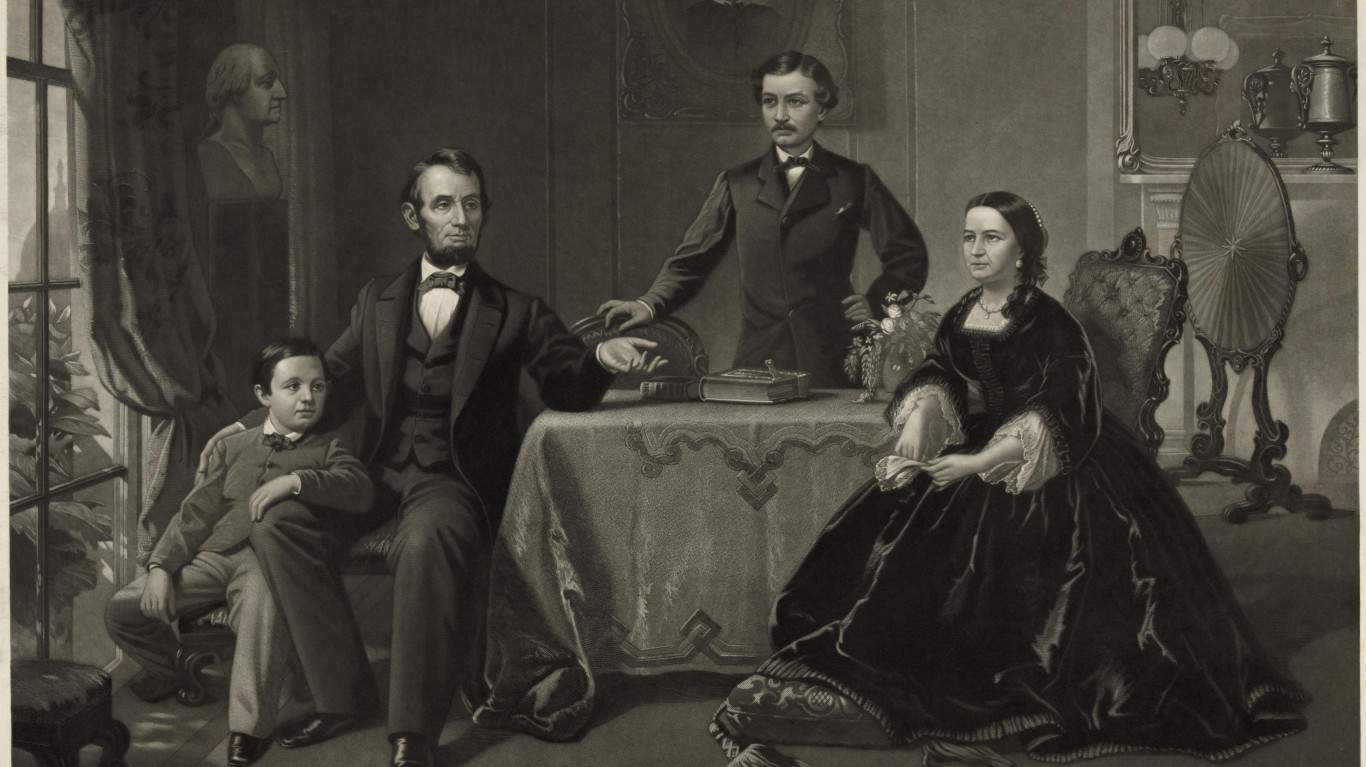
- Tenure as first lady: March 4, 1861 – April 15, 1865
- Mean score: 61.01
One of the best-known of first ladies, Abraham Lincoln’s wife had a difficult time in the White House, being possibly bipolar and suffering from migraines and severe depression. Contemporary observers (including her husband) criticized her for spending too much money on redecorating the White House and for other expenditures. While she loyally supported her husband and his policies, she is considered to have made his life as president more difficult. She ranks second-lowest in the Siena College survey for both leadership and public image.
28. Pat Nixon
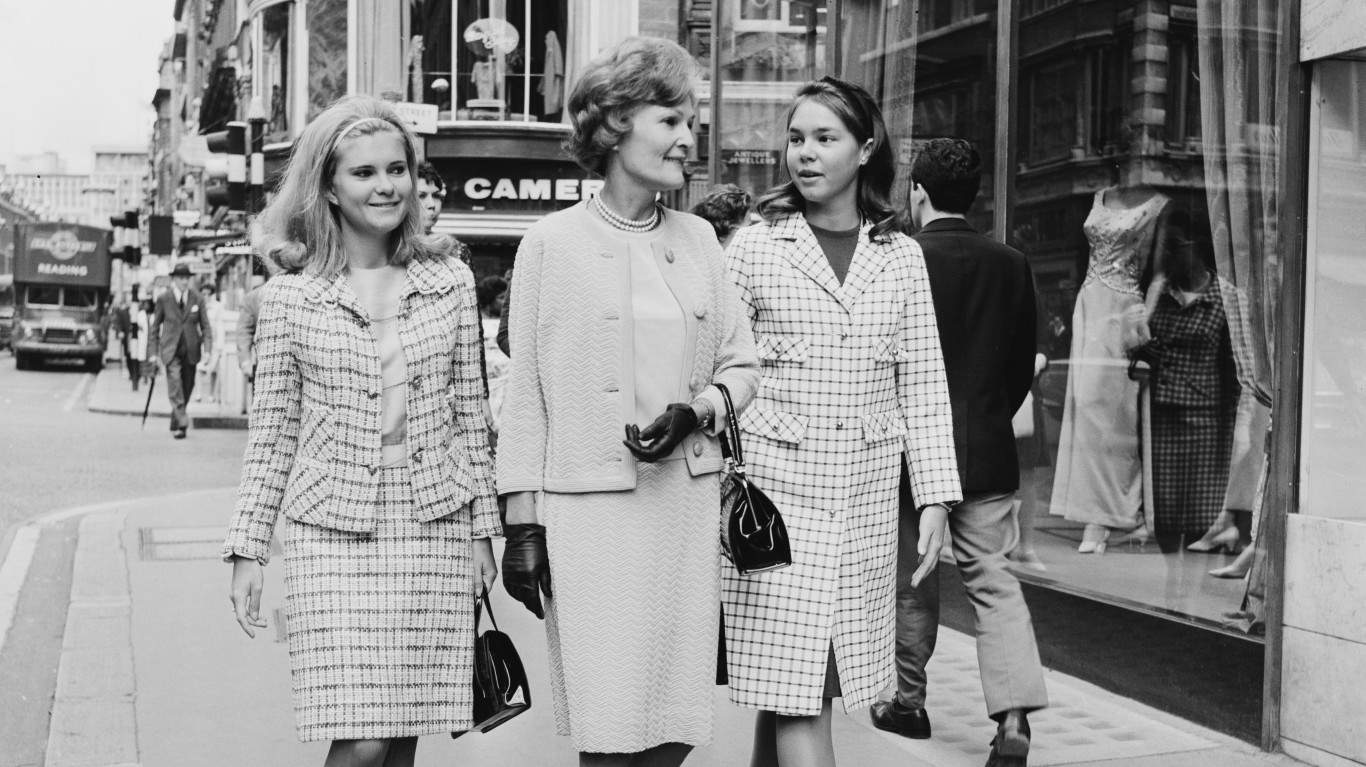
- Tenure as first lady: Jan. 20, 1969 – Aug. 9, 1974
- Mean score: 61.08
Richard Nixon’s wife was an active first lady, encouraging Americans to volunteer for worthy causes, traveling widely both on her own and with her husband, advocating for the handicapped, and supporting the Equal Rights Amendment. She also expended considerable time and resources on building a White House art collection and refurbishing most of the place – and opening it to the public for evening tours so that they could appreciate its grandeur. The Siena survey, however, places her next-to-last in the “own woman” category.
27. Lucretia Garfield
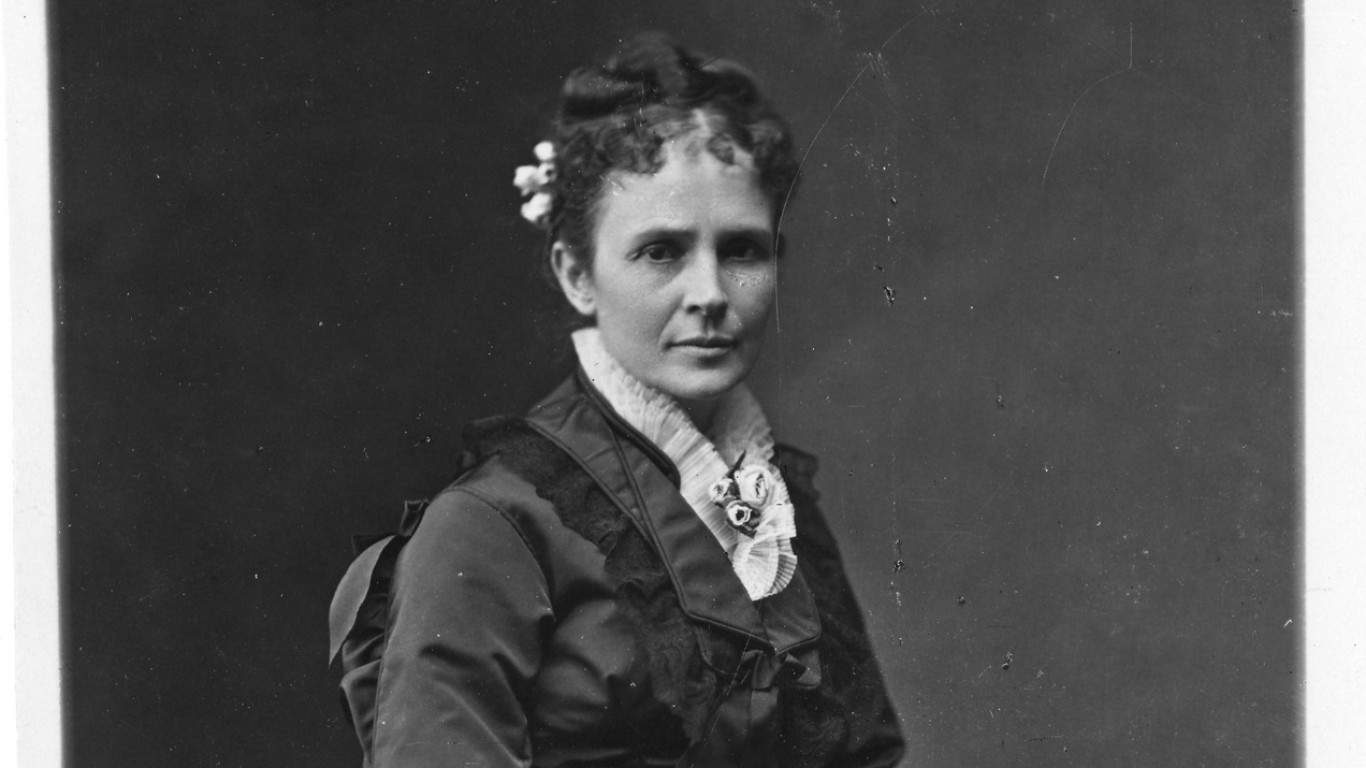
- Tenure as first lady: March 4, 1881 – Sept. 19, 1881
- Mean score: 61.85
With her role as first lady cut short by her husband’s assassination not much more than six months after his inauguration, Lucretia had minimal effects on the White House, though she was fascinated by its history, and undertook some redecorating. She was politically aware and consulted with her husband at times.
26. Frances Cleveland
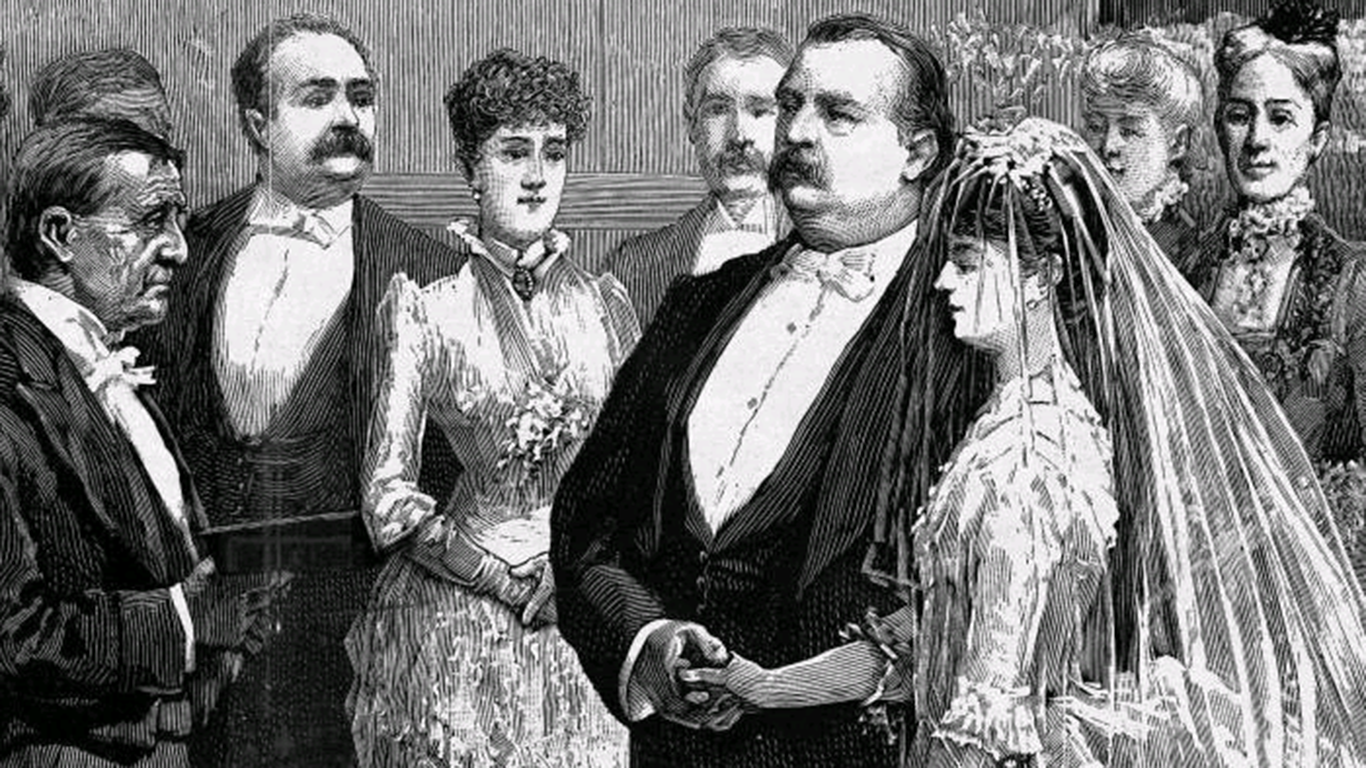
- Tenure as first lady: June 2, 1886 – March 4, 1889 and March 4, 1893 – March 4, 1897
- Mean score: 62.25
Grover Cleveland served two non-consecutive terms as president, making Frances the only first lady to hold that position on two separate occasions. She was a popular personality, drawing crowds and media attention when she appeared in public, and was a supporter of the temperance movement – and a critic of women’s suffrage. Curiously, her reputation seems to have declined over the years, as she placed No. 13 on the Siena College list in 1982.
25. Grace Coolidge
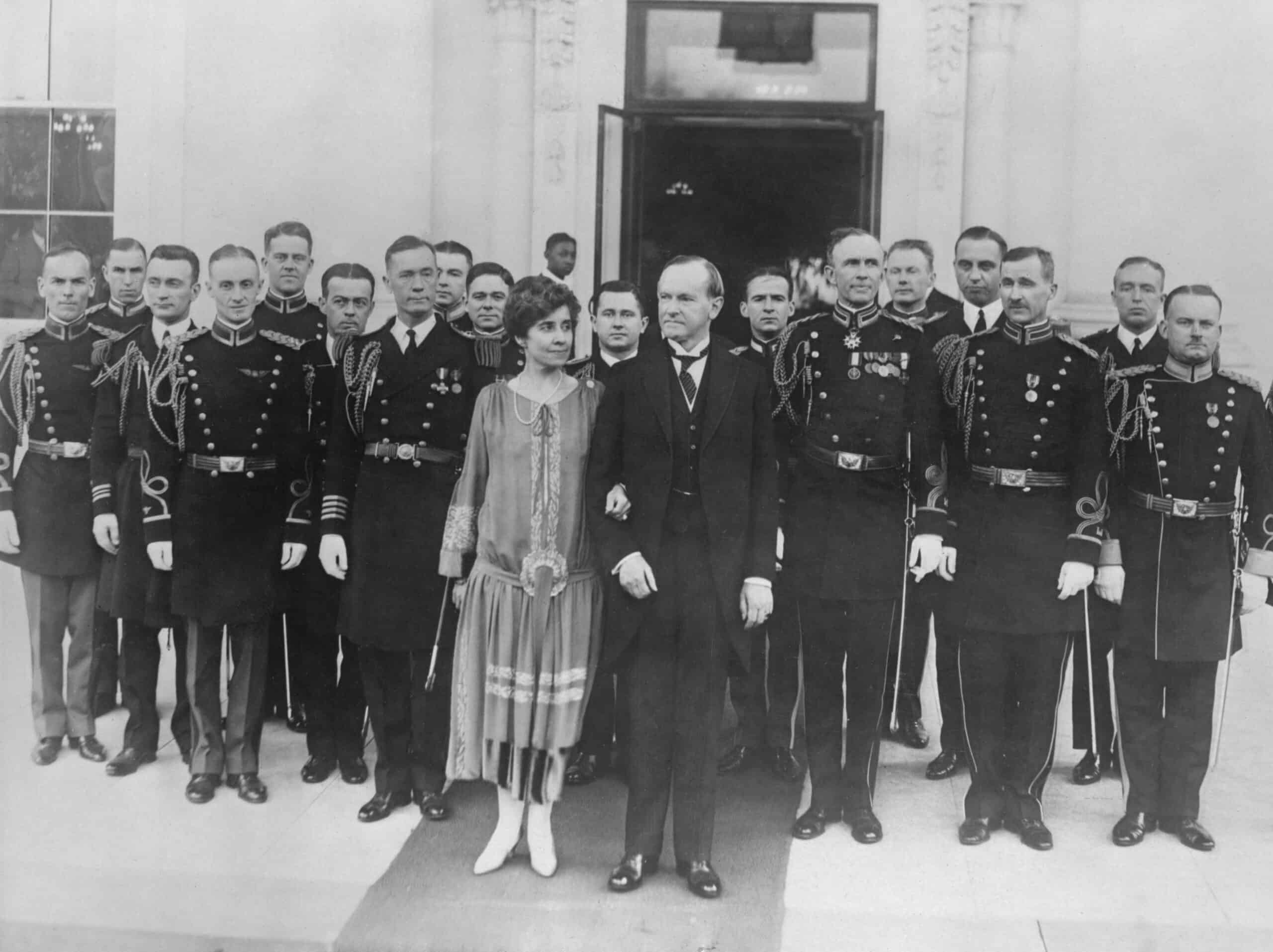
- Tenure as first lady: Aug. 2, 1923 – March 4, 1929
- Mean score: 62.58
“Silent” Calvin Coolidge’s wife was adept at arranging parties and receptions at the White House – the most famous was a welcome-home fête for aviator Charles Lindbergh after his pioneering solo flight across the Atlantic in 1927 – but was known for her modesty and lack of pretension. She apparently remained happily ignorant of her husband’s political affairs. Her highest ranking from Siena College is for public image, in which she placed 16th.
24. Helen Taft
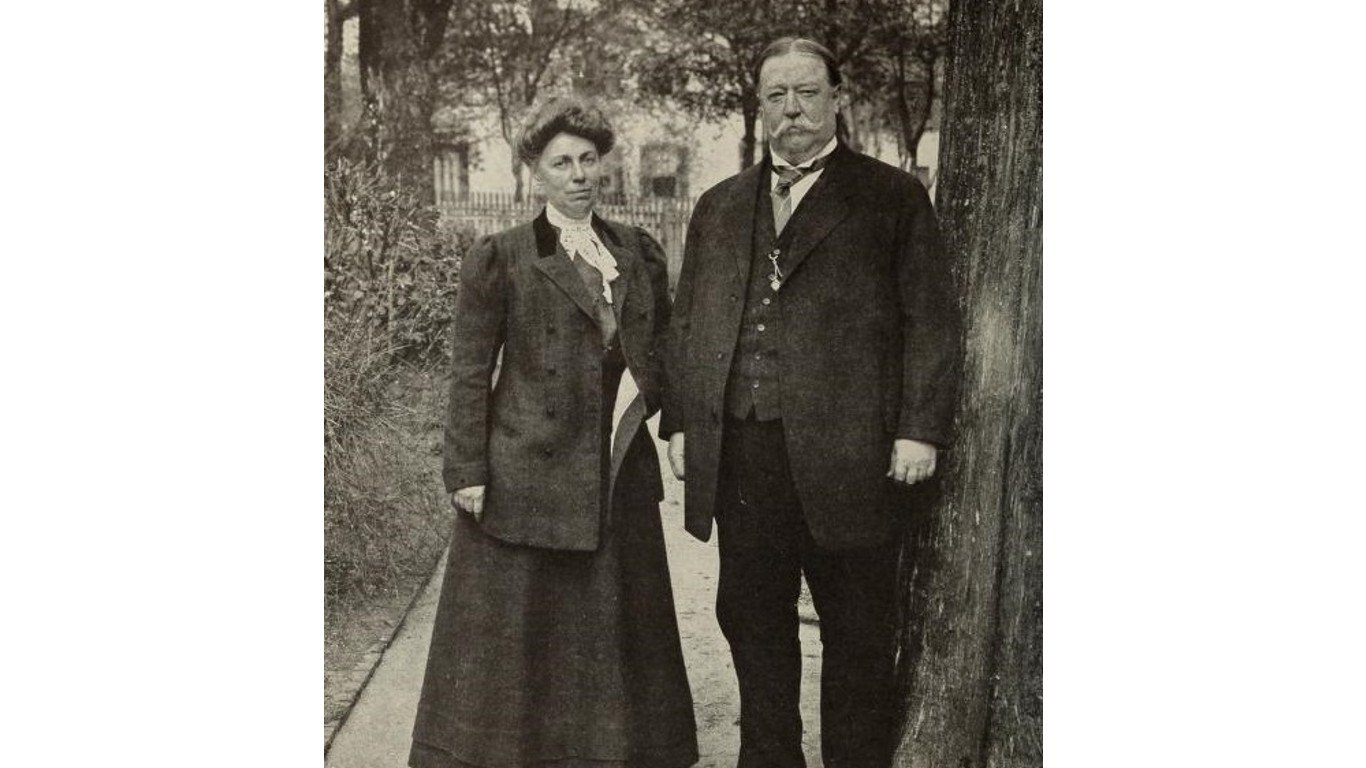
- Tenure as first lady:
- Tenure as first lady: March 4, 1909 – March 4, 1913
- Mean score: 62.73
Remembered as a politically involved first lady, Helen freely gave advice and expressed her strongly held opinions to her husband, William Howard Taft, and also took full charge of redecorating the White House and rejiggering the staff. She suffered a stroke a few months after her husband became president, which limited her activities somewhat, but she continued to be a strong influence on him. She also staged frequent parties, recitals, and other activities, and was responsible for introducing the first automobile fleet to the White House, replacing horse-drawn buggies.
23. Sarah Polk
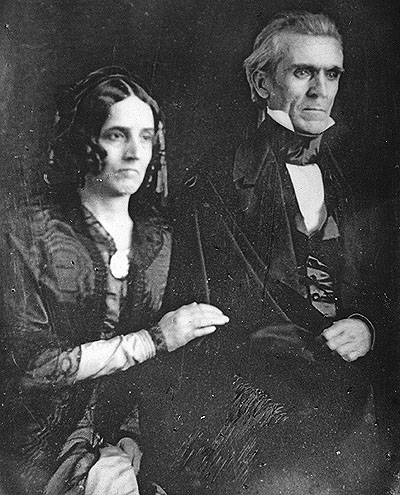
- Tenure as first lady: March 4, 1845 – March 4, 1849
- Mean score: 63.16
James Polk’s wife was known for her political support of her husband and was one of his trusted advisors. Socially, she was a study in contrasts. According to her official biography on the White House website, she was “A devout Presbyterian [who] refused to attend horse races or the theater; but she always maintained social contacts of value to James. She appeared at the inaugural ball, but did not dance. Skilled in tactful conversation, Mrs. Polk enjoyed wide popularity as well as deep respect.”
22. Lucy Hayes
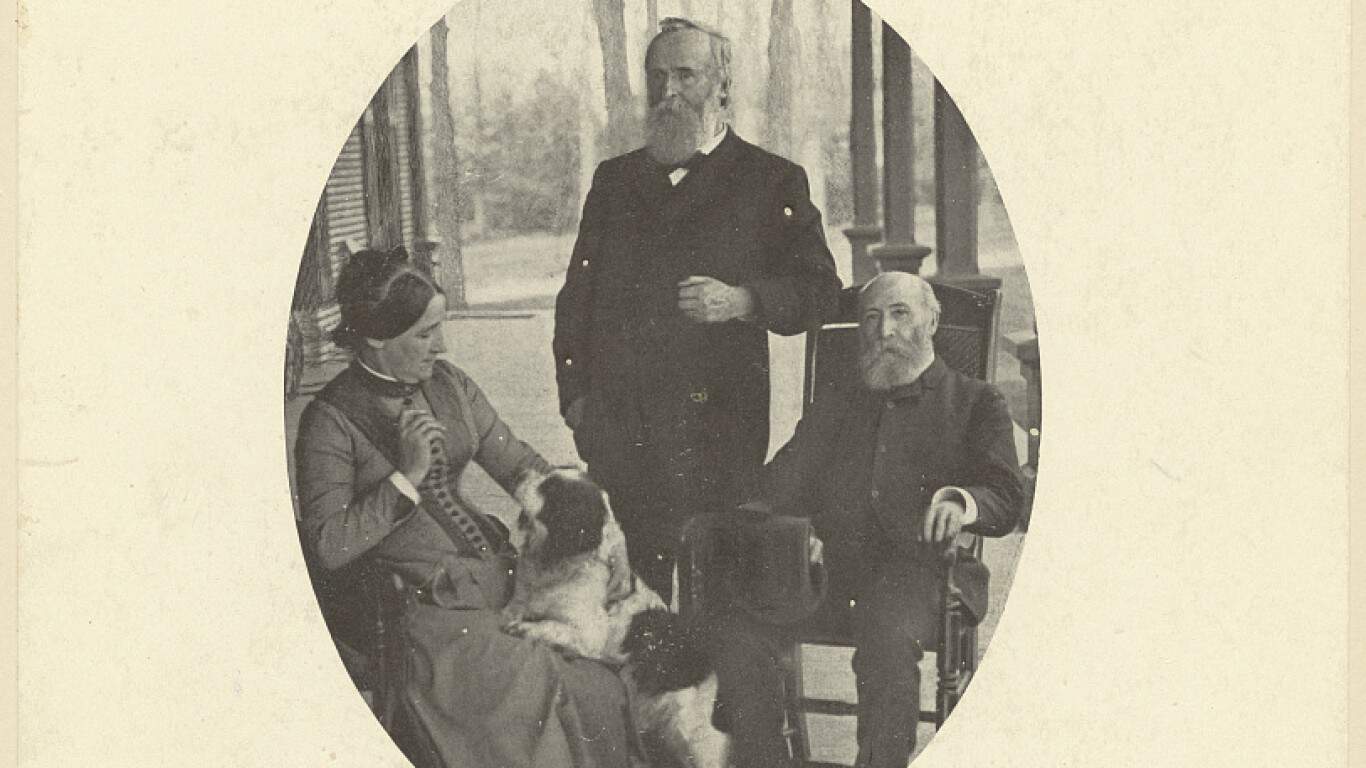
- Tenure as first lady: March 4, 1877 – March 4, 1881
- Mean score: 63.33
Lucy’s stretch in the White House got off to a rocky start, since the election that eventually brought her husband, Rutherford B. Hayes, to power was contested and he wasn’t confirmed as president until five months after the voting. Finally installed, she hosted lively social events, and was the first president’s wife to become commonly known as the “first lady.” Among her contributions to her august temporary home were installing the first running water and converting the billiard room into a greenhouse.
21. Mamie Eisenhower

- Tenure as first lady: Jan. 20, 1953 – Jan. 20, 1961
- Mean score: 63.49
During the administration of her husband, Dwight D.Eisenhower, Mamie became known as a gracious and generous hostess, and paid special attention to the decor of the White House and the functions of the staff – reportedly winning them over after an initial chill. She stayed out of politics for the most part, but was active in civil rights and maintained that women should be elected to Congress. After her husband suffered a heart attack in 1955, she assumed a major fundraising role for the American Heart Association.
20. Bess Truman

- Tenure as first lady: April 12, 1945 – Jan. 20, 1953
- Mean score: 63.5
Harry and Bess Truman moved into the White House on short notice, following the death of President Roosevelt on April 12, 1945. After the national mourning period for Roosevelt ended and World War II came to a definitive close, Bess revived social life at 1600 Pennsylvania Avenue, and accepted the roles of honorary president of the American Red Cross and the Girl Scouts. She was known for counseling her husband on matters of state and editing his speeches.
19. Ellen Wilson
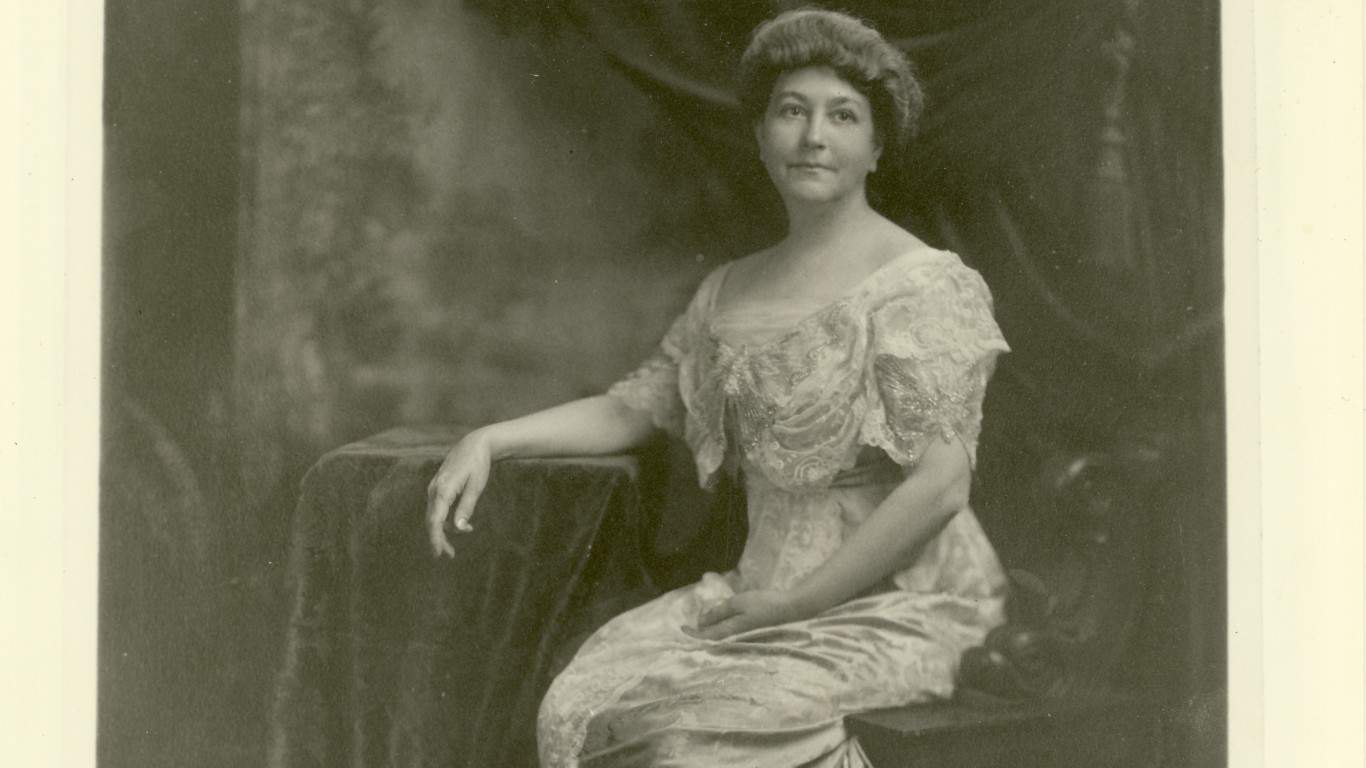
- Tenure as first lady: March 4, 1913 – August 6, 1914
- Mean score: 64.03
Ellen Wilson had studied art, and when she moved into the White House with her husband, Woodrow Wilson, she had a studio for her painting installed, illuminated by a skylight. The Wilsons made the decision not to have an inaugural ball, but Ellen became skilled at arranging dinner parties and other events. Perhaps because her family had profited from slavery, she devoted time to improving the conditions of Black housing in the capital. She suffered from kidney disease, and became one of three first ladies to die while living in the White House.
18. Lou Hoover
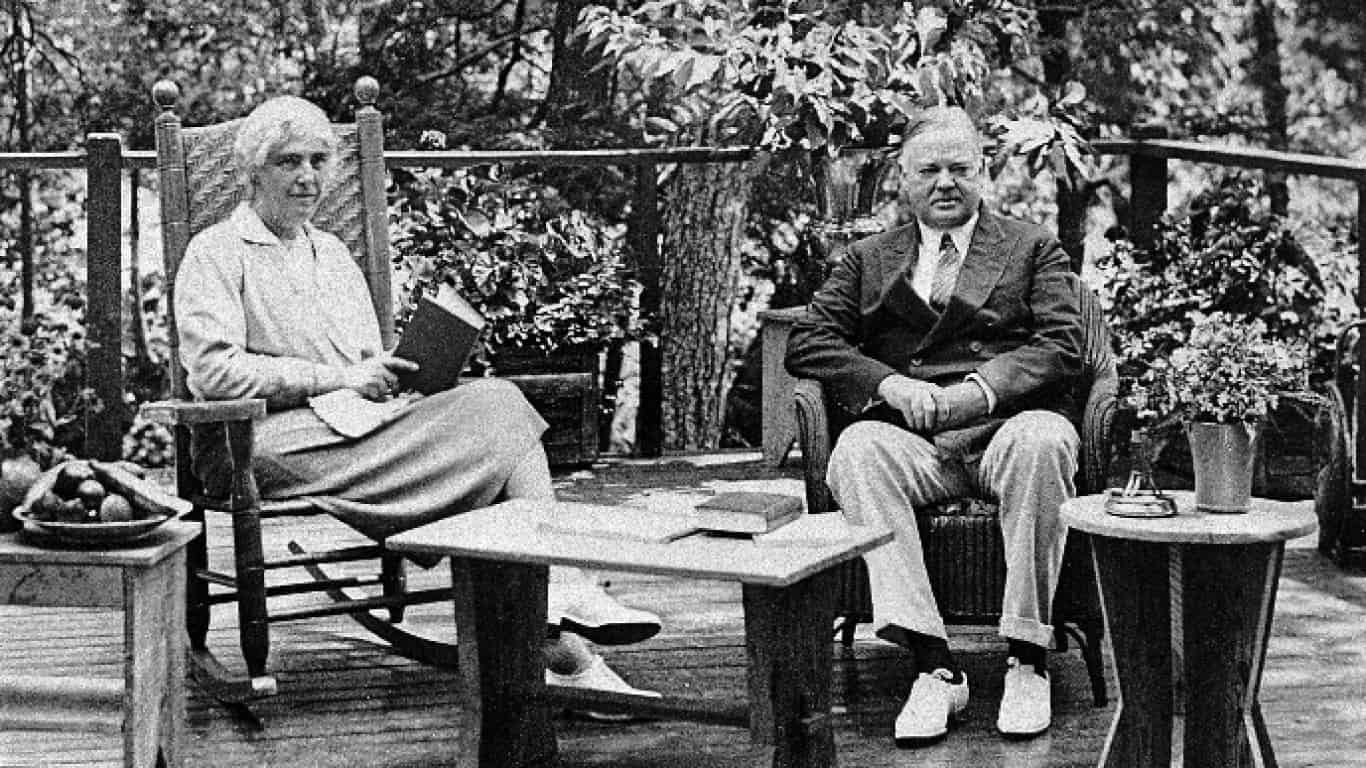
- Tenure as first lady: March 4, 1929 – March 4, 1933
- Mean score: 64.16
Herbert Hoover gets mixed reviews as a president (tending towards the negative), but his wife, Lou, is remembered as a formidable personality. She held a degree in geology from Stamford University, was a Latin scholar, and spoke Mandarin Chinese. In the White House, she oversaw extensive renovations of various rooms and commissioned the first full inventory of its artwork and furniture. She freely offered advice to her husband, while herself remaining active in various organizations, including the Girl Scouts, and advocating for women’s rights.
17. Julia Grant

- Tenure as first lady: March 4, 1869 – March 4, 1877
- Mean score: 64.3
Later describing her time in the White House as “the happiest period” of her life, Julia was known as a proud and loving wife to her husband, the Civil War victor Ulysses S. Grant, both in and out of his presidential tenure. Born into a wealthy family on a plantation outside St. Louis, Julia had a reputation for dressing elegantly and for throwing elaborate parties and receptions as first lady.
16. Louisa Adams
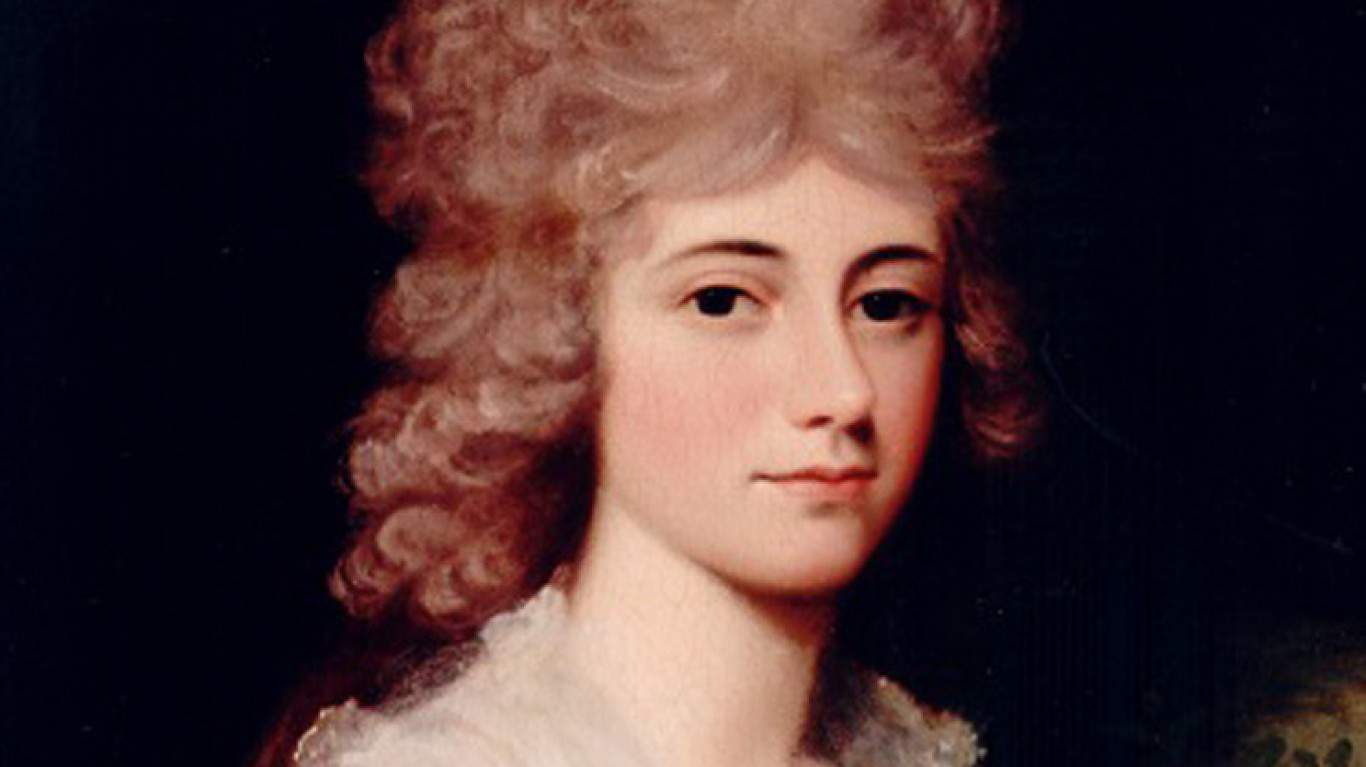
- Tenure as first lady: March 4, 1825 – March 4, 1829
- Mean score: 64.48
Raised in France and a companion to her husband, John Quincy Adams, on his postings to London and to Prussia and the Russian Empire, Louisa had a difficult time at the White House. She was unpopular in Washington and critics accused her of being snobbish because of her French upbringing; the couple wasn’t getting along well and she was often away; and she suffered from ill health. Nonetheless, the Siena survey ranks her above average for value to the country, integrity, being her own woman, accomplishments, and courage.
15. Nancy Reagan

- Tenure as first lady: Jan. 20, 1981 – Jan. 20, 1989
- Mean score: 65.1
A former actress and a socialite known for her elegant wardrobe, Nancy Reagan occupies the second-to-last position for integrity in the Siena survey metrics, but places eighth overall for value to the president – Ronald Reagan. She solicited private donations to pay for extensive renovations of the White House (and to controversially acquire a 4,370-piece set of gold-rimmed Lenox china), and presided over some 56 state dinners during her eight-year tenure. She was also known for creating a widely criticized anti-drug program dubbed Just Say No, and for planning much of her husband’s schedule based on advice from an astrologer.
14. Laura Bush

- Tenure as first lady: Jan. 20, 2001 – Jan. 20, 2009
- Mean score: 67.46
As a one-time schoolteacher and librarian, it isn’t surprising that Laura, wife of George W. Bush, focused her activities at the White House on promoting childhood development and education and literacy programs. She also founded the National Book Festival in conjunction with the Library of Congress and hosted a Conference on Global Literacy. In addition, she was active in women’s health issues, both at home and on numerous trips abroad. She was generally well-liked as a first lady, and scores in the top 25% in the Siena survey for integrity, stewardship, and public image.
13. Edith Roosevelt
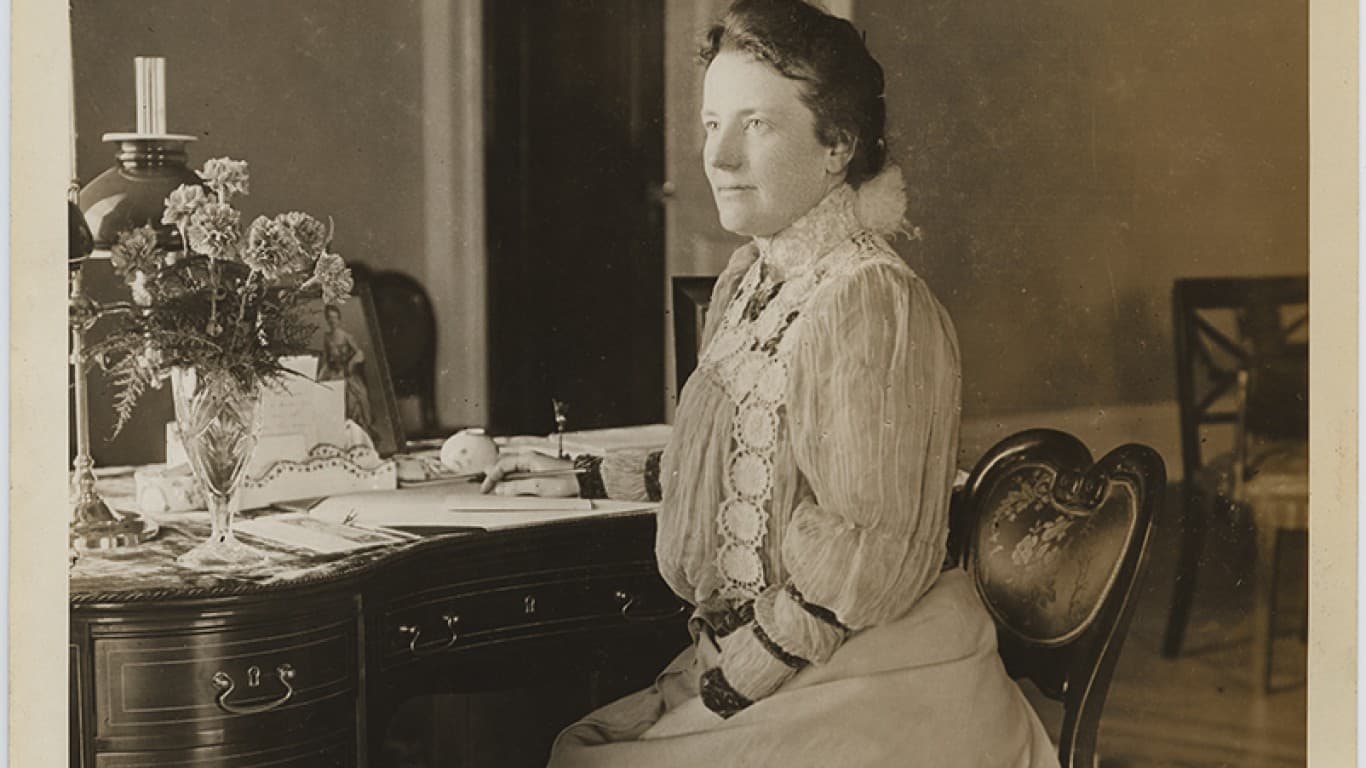
- Tenure as first lady: Sept. 14, 1901 – March 4, 1909
- Mean score: 67.75
Teddy Roosevelt and his wife, Edith, found themselves suddenly and unexpectedly in the White House following the assassination of President William McKinley. In their early months there, the mood was somber, but Edith gradually began planning dinners and parties, and after Teddy won reelection in 1904, she supervised a dramatic renovation of the White House by the famed architectural firm of McKim, Mead & White. A great lover of theater and classical music, she arranged performances in the place. She was also known to influence her husband with her advice and opinions.
12. Edith Wilson
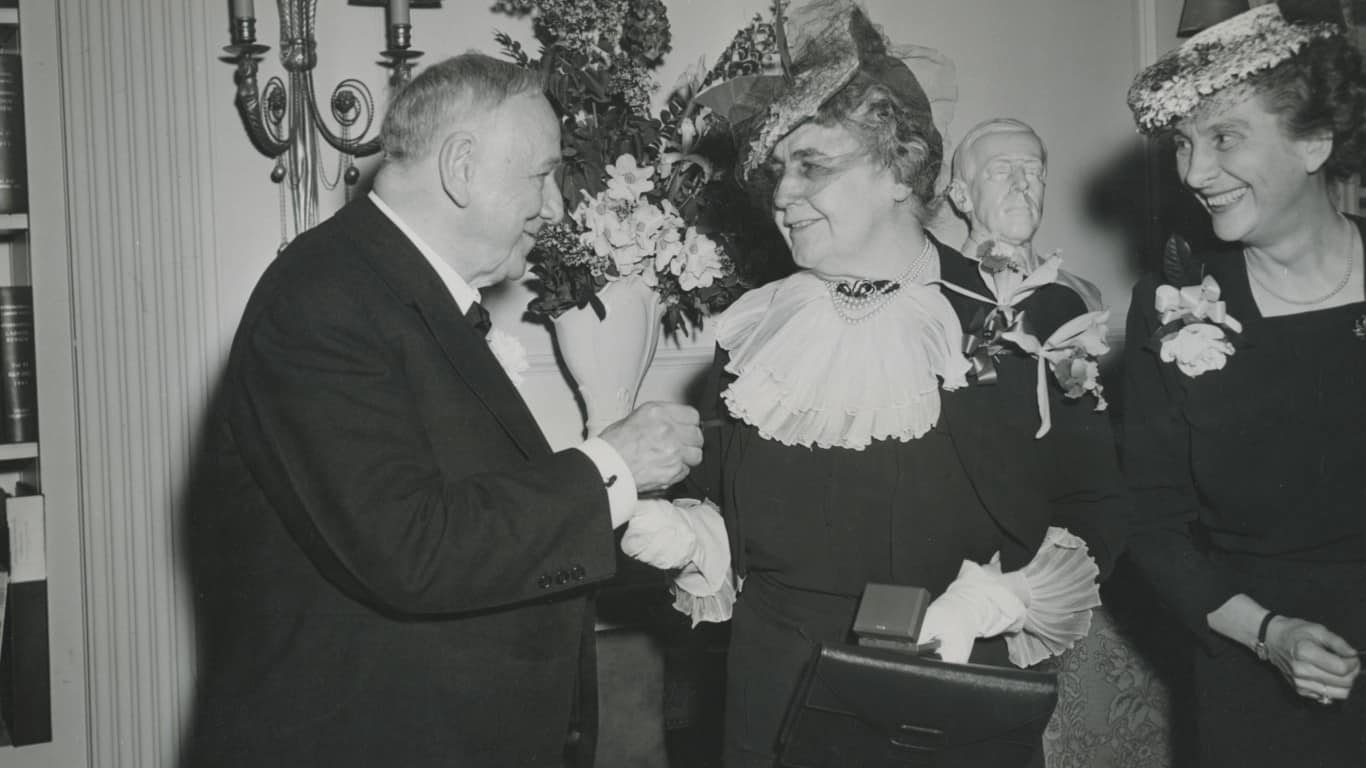
- Tenure as first lady: Dec. 18, 1915 – March 4, 1921
- Mean score: 68.21
Woodrow Wilson’s first wife, Ellen (see above), died of kidney disease while in the White House. Not quite a year-and-a-half later, the president married Edith Bolling, making her his second first lady. She is remembered in some circles for having brought sheep onto White House property to “mow” the lawns due to a shortage of workmen as World War I raged. On a more serious level, she elevated the position of first lady by accompanying her husband on trips to Europe – and after he suffered a stroke in 1919, she assumed many of his duties and helped him with personnel issues and official documents.
11. Barbara Bush

- Tenure as first lady: Jan. 20, 1989 – Jan. 20, 1993
- Mean score: 69.81
Well-liked and generally highly rated by historians, George H. W. Bush’s wife (and George W. Bush’s mother) projected a grandmotherly image, but was extremely active, leading tours of the White House, swimming a reported 72 laps daily in the White House pool, promoting reading skills with her Foundation for Family Literacy, combatting discrimination against AIDS patients, advising her husband on various matters, and establishing friendly relations with assorted foreign dignitaries.
10. Martha Washington
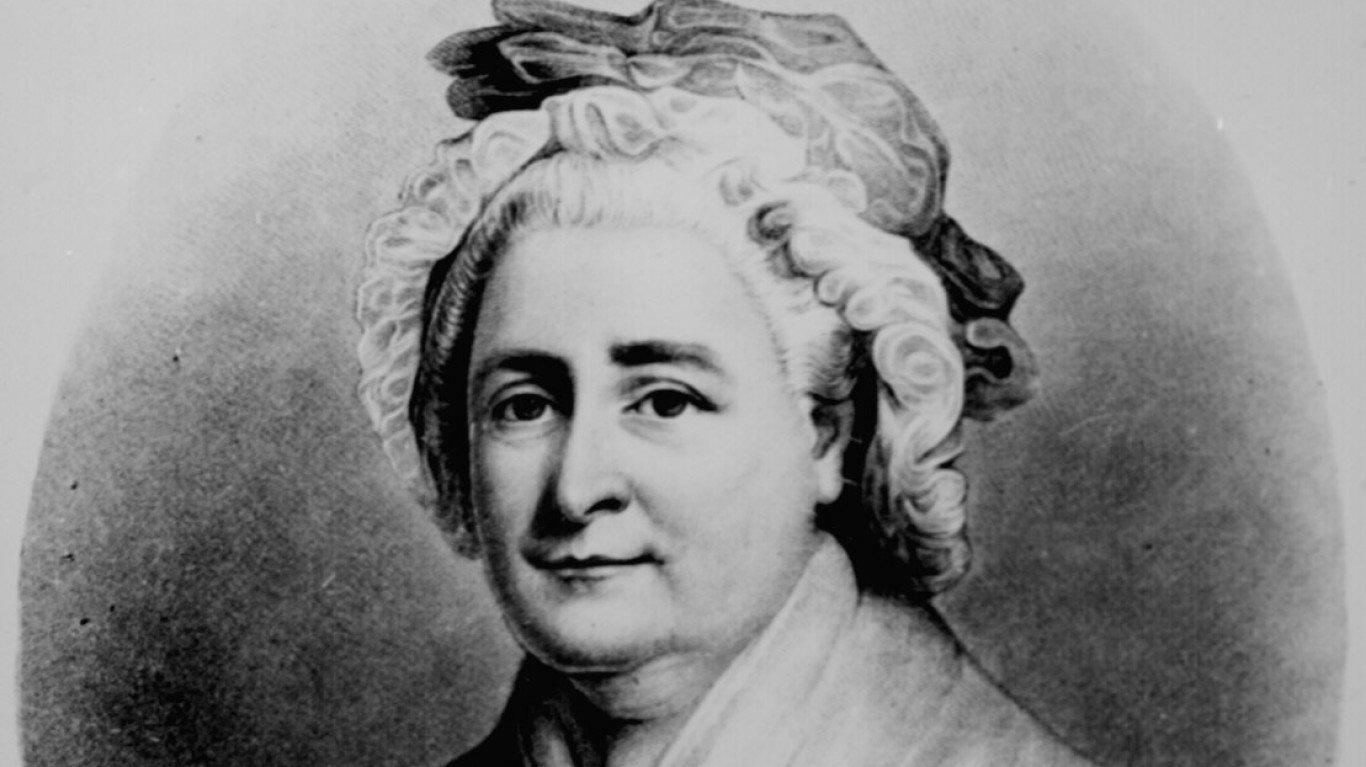
- Tenure as first lady: April 30, 1789 – March 4, 1797
- Mean score: 71.72
The first of all American first ladies, Martha Washington wasn’t particularly happy that her husband, George, had taken on the role as our nation’s first president, and at first refused to follow him to the then-capital of the country, New York City. She overcame her objections, however, and became known for hosting receptions and other official functions in both New York City and the subsequent temporary capital of Philadelphia.
9. Rosalynn Carter
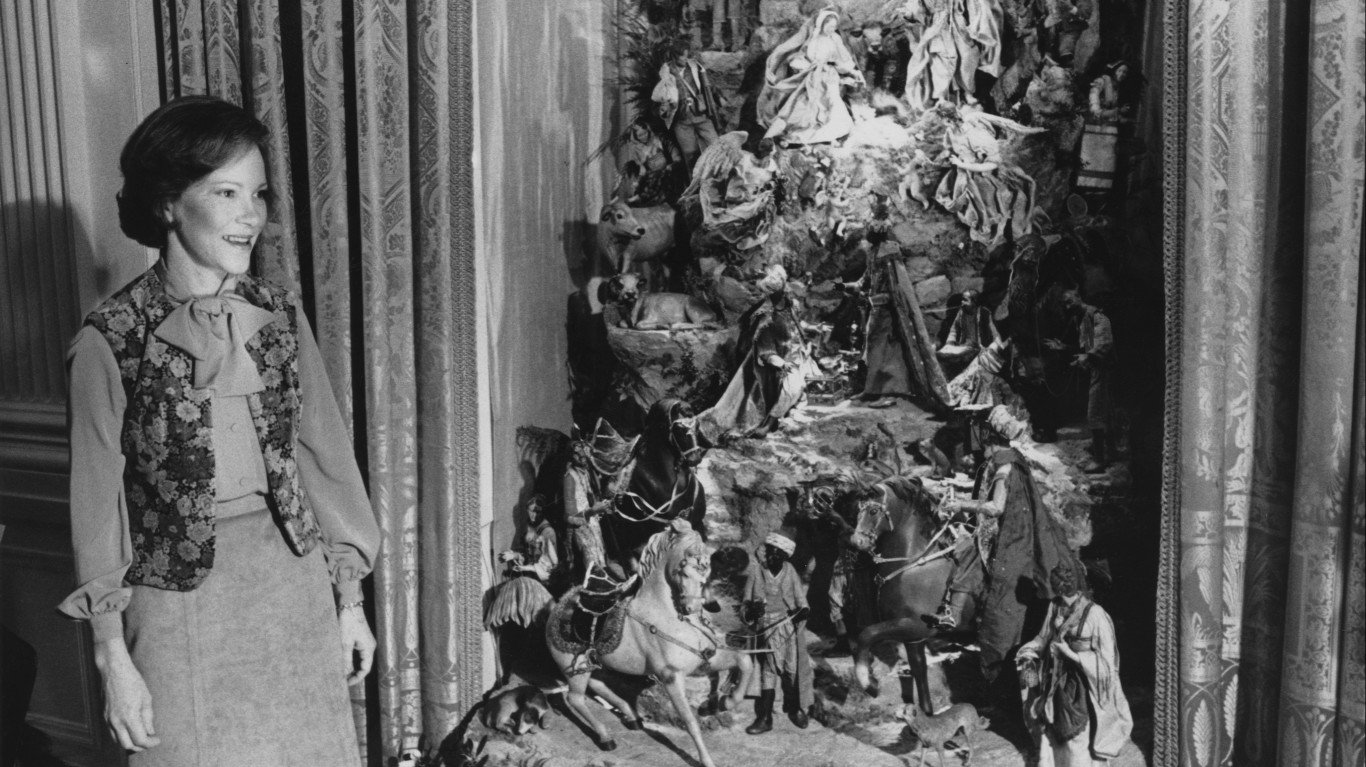
- Tenure as first lady: Jan. 20, 1977 – Jan. 20, 1981
- Mean score: 73.17
Rosalynn and Jimmy Carter have the distinction of having been the longest-married couple in the history of the presidency, tying the knot in 1946 and remaining together until her death in 2023. Rosalynn took an active interest in the affairs of state as first lady, attending meetings and discussing issues with her husband – who described her as an equal partner. She became active in mental health affairs and was honorary chair of the President’s Commission on Mental Health, and together with former first ladies Betty Ford and Lady Bird Johnson (see below) was a vocal supporter of the Equal Rights Amendment. She was the first first lady to maintain an office in the East Wing.
8. Hillary Clinton

- Tenure as first lady: Jan. 20, 1993 – Jan. 20, 2001
- Mean score: 73.9
Hillary took an unusually active role in the administration of her husband, Bill Clinton. Her first major assignment was to chair a task force on health care – an effort, ultimately unsuccessful, to establish a national health insurance plan. She subsequently became a major supporter of the State Children’ Health Insurance Program, investigations into the so-called Gulf War Syndrome affecting military veterans, the Welfare Reform Act, and the Foster Care Independence Act, among other initiatives. She was outspoken in her advocacy of womens’ rights, made scores of trips abroad to help foster good international relations, and had a hand in the Northern Ireland peace process. She was also subjected to several investigations impugning her integrity, and weathered the Monica Lewinsky scandal that led to the impeachment of her husband. She is nonetheless ranked No. 4 of all first ladies considered by the Siena survey in the categories of leadership, being her own woman, and accomplishments.
7. Claudia (Lady Bird) Johnson
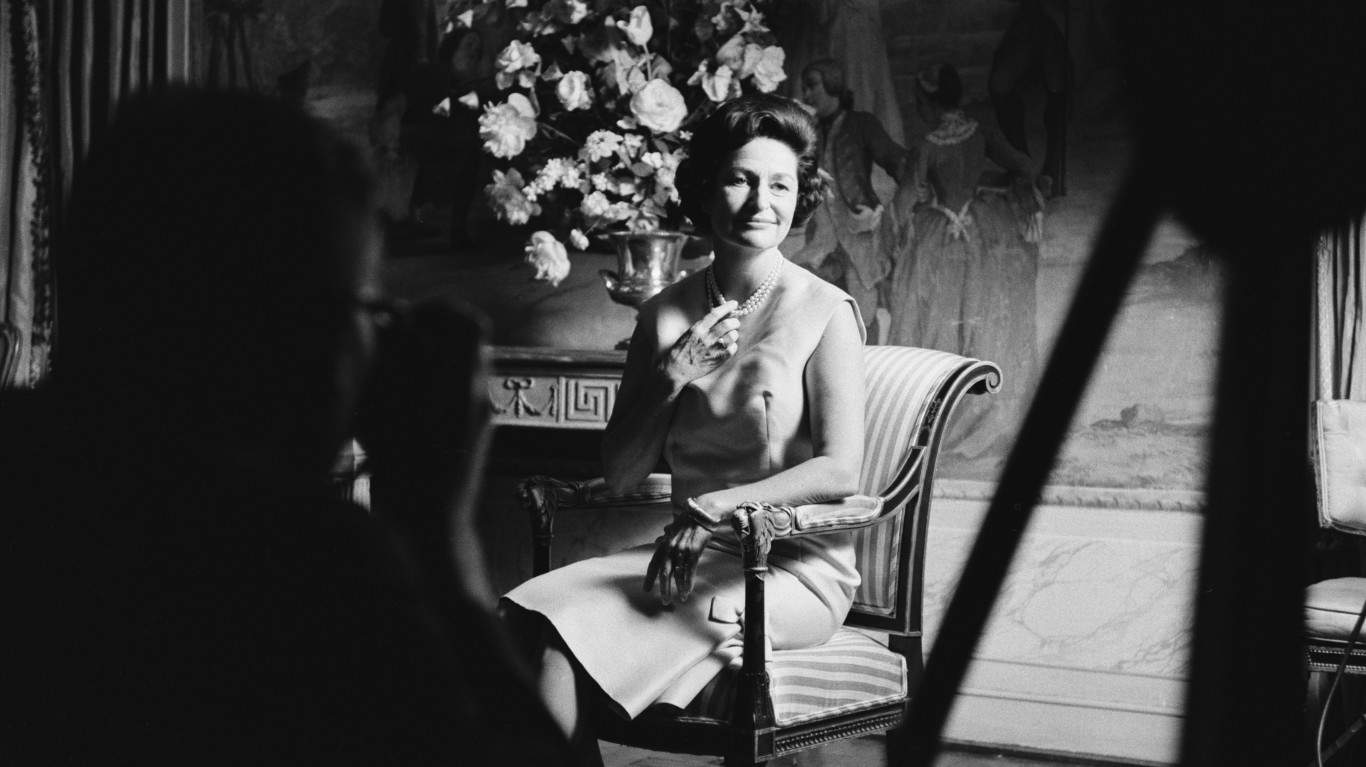
- Tenure as first lady: Nov. 22, 1963 – Jan. 20, 1969
- Mean score: 74.49
Lady Bird Johnson’s highest ranking in the Siena survey is fifth place for White House stewardship, and she scores well for value to the country, integrity, and accomplishments. She became first lady instantly upon the assassination of John F. Kennedy and the ascension of her husband, Lyndon Johnson, to the presidency on Nov. 22, 1963. She is credited with expanding the parameters of the first lady’s office, appointing her own chief of staff. She embraced environmental causes, working for the beautification of the nation’s capital and of the American highway system and dedicating the Glen Canyon Dam in Arizona. She also supported the Head Start initiative to help children from poorer families prosper in the educational system.
6. Betty Ford
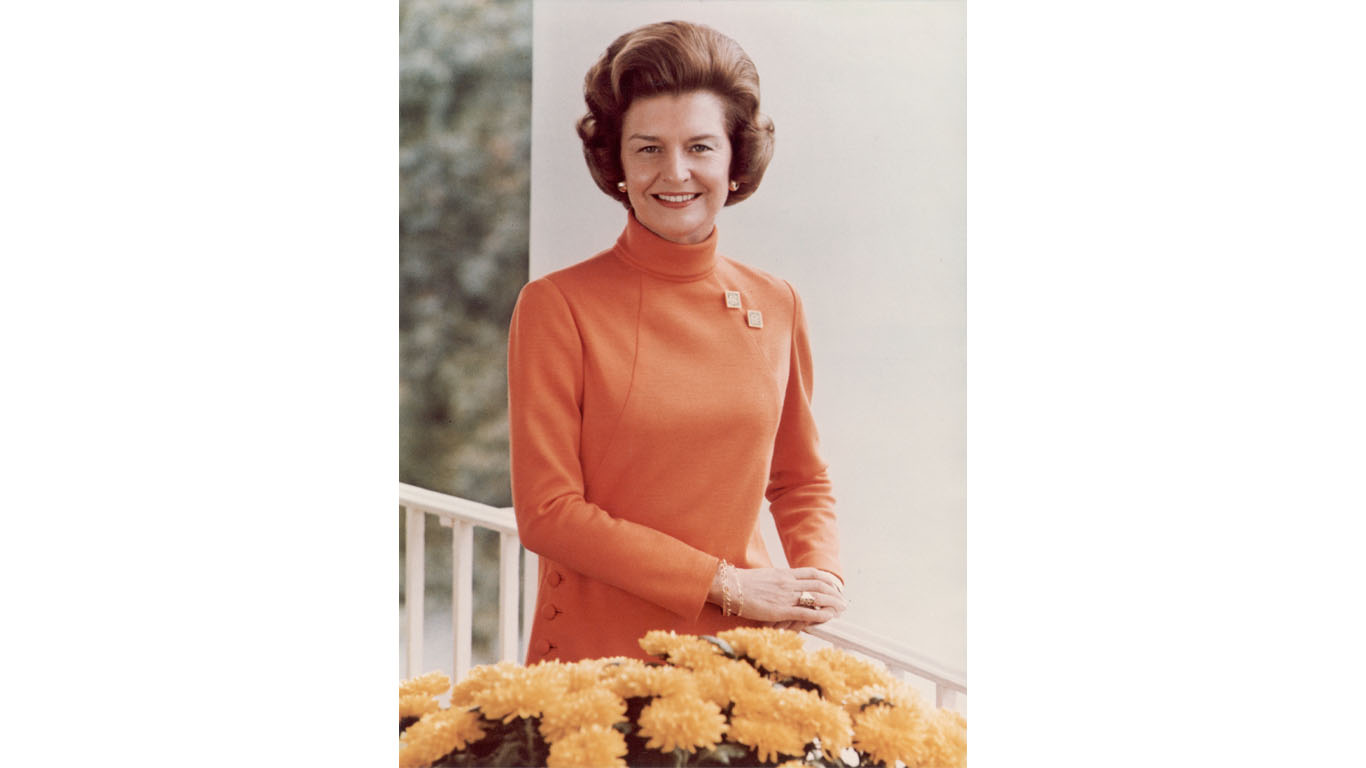
- Tenure as first lady: Aug. 9, 1974 – Jan. 20, 1977
- Mean score: 74.86
Betty Ford became first lady when her husband assumed the presidency following the resignation in disgrace of Richard Nixon. She was popular with the American public, often being named as one of the nation’s most admired women, despite (or perhaps because of) the fact that she vocally supported the Equal Rights Amendment and abortion rights and refused to condemn premarital sex and marijuana use. She places fifth for integrity and courage in the Siena survey.
5. Dolley Madison
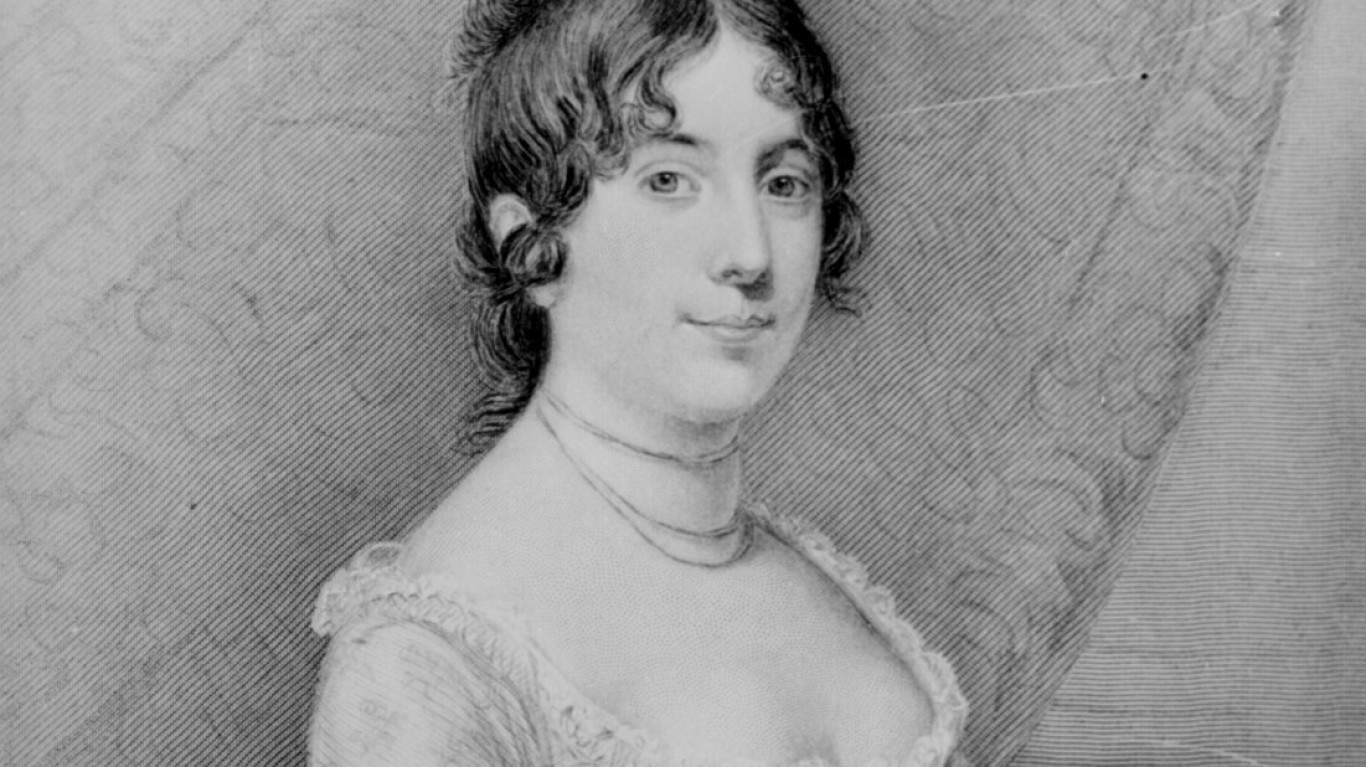
- Tenure as first lady: March 4, 1809 – March 4, 1817
- Mean score: 78.14
As the wife of our fourth president, James Madison, Dolley (whose name is sometimes spelled Dolly or Dollie) broke new ground by inviting members of both the Whig and Democratic-Republican parties to White House affairs, whereas previously only the party of the presiding president was included. She came to her position with some experience, because she had fulfilled some of the functions of a first lady – including helping to furnish the White House – for Madison’s predecessor, the widowed Thomas Jefferson, while Madison was secretary of state. She didn’t spend her entire tenure in the executive mansion, however, as the British burned the White House in the War of 1812 and Dolley and her husband moved to a nearby property called the Octagon House.
4. Jaqueline Kennedy

- Tenure as first lady: Jan. 20, 1961 – Nov. 22, 1963
- Mean score: 78.62
Holding first place in the Siena survey for stewardship of the White House while her husband, John Fitzgerald Kennedy, was in office, Jackie is considered perhaps the most elegant and stylish of first ladies. She was a dedicated patron of the arts, and instrumental in the development of the National Endowment for the Arts and the National Endowment for the Humanities, and she spearheaded a major upgrading of the White House. She was also active in historical preservation, both in America and abroad, and founded the White House Historical Association. She also won friends for the nation on numerous trips abroad, using her personal charm and command of several languages to help establish good relations with foreign leaders.
3. Michelle Obama
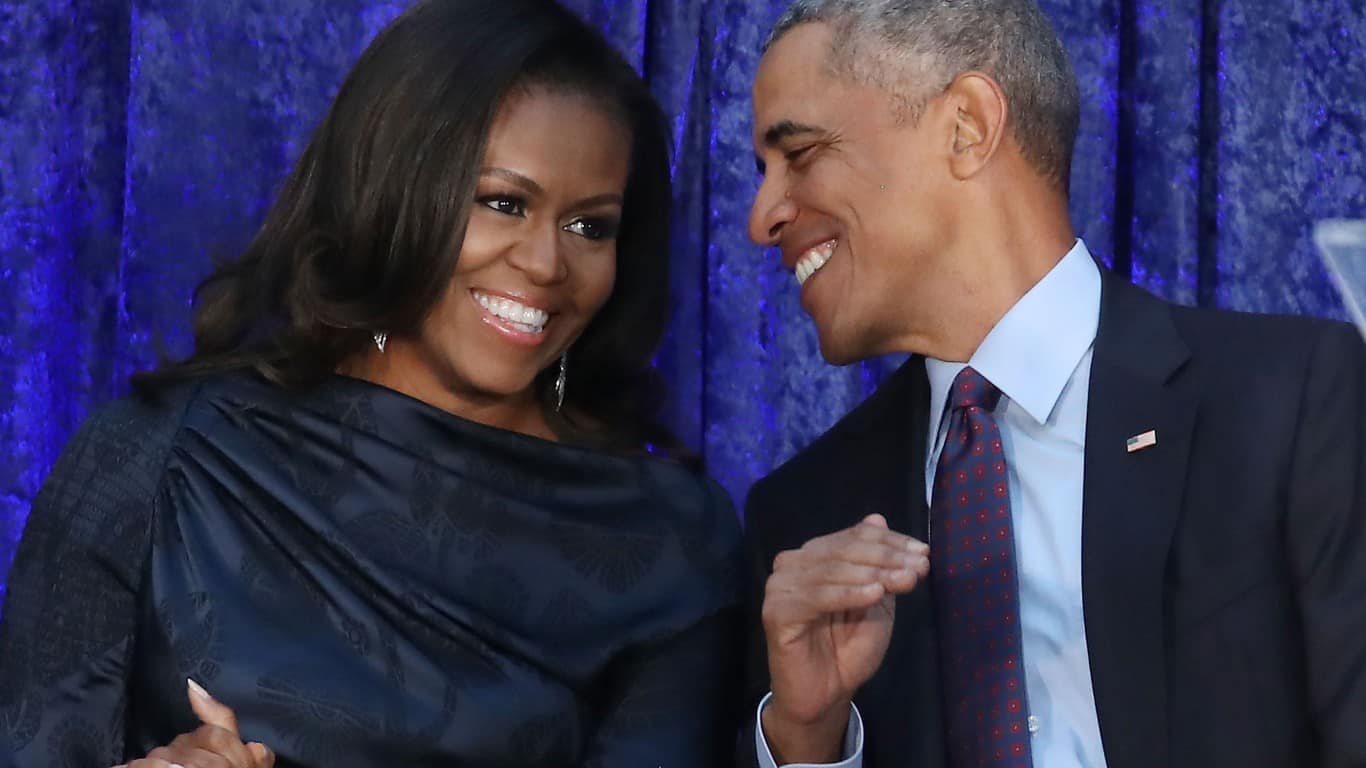
- Tenure as first lady: Jan. 20, 2009 – Jan. 20, 2017
- Mean score: 82.26
The first Black first lady, as wife of the first Black president, Barack Obama, Michelle Obama was a vocal supporter of women’s rights and of programs for the homeless, and created an initiative she called Let’s Move! to help combat childhood obesity. Her interest in healthy eating also spurred her to plant an organic kitchen garden on the White House grounds. She is awarded the third-highest rank in all the metrics considered by the Siena survey, except for courage, for which she ranked fourth, and accomplishments, for which she placed second.
2. Abigail Adams
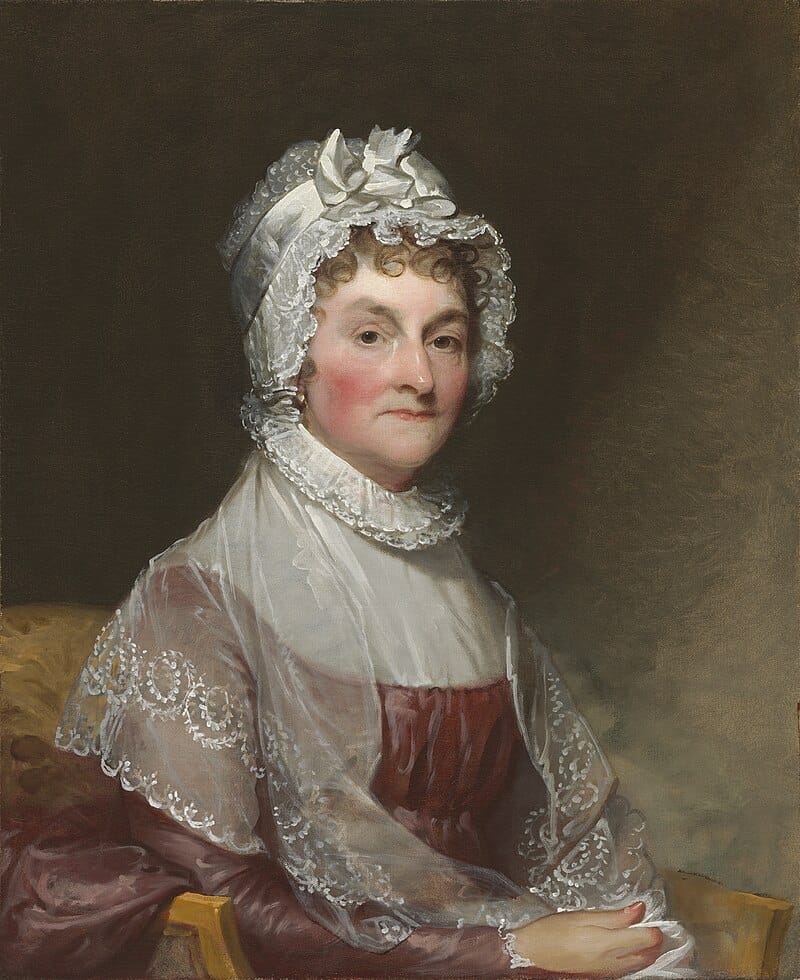
- Tenure as first lady: March 4, 1797 – March 4, 1801
- Mean score: 83.55
A trusted confidante to her husband, John Adams, in matters of state, Abigail was also the mother of future president John Quincy Adams. She has been dubbed one of the “Founding Mothers” of the United States. She was an early advocate for women’s rights and though she held racist views about Blacks, was an ardent abolitionist. She was the first of the nation’s first ladies to occupy the newly completed White House, though she lived there only briefly, as the Adamses remained in the former U.S. capital of Philadelphia until Nov. 1, 1800, just four months before he left office.
1. Eleanor Roosevelt

- Tenure as first lady: March 4, 1933 – April 12, 1945
- Mean score: 84.41
The longest-serving American first lady of the United States (her husband, Franklin Delano Roosevelt, was in office for almost four full terms), Roosevelt places in first or second place in the Siena survey for all but one of the metrics it considers (stewardship, for which she was ranked fourth). She was unusually active politically and for social causes for a first lady, becoming the first person to hold the office of Chair of the United Nations Commission on Human Rights upon its founding in 1946, and vigorously supporting civil rights. (These are 20 of the greatest speeches of the civil rights movement.)
